

How Long Does it Take to Get to The Sun?
Last Updated: August 18, 2023
When we consider other astronomical objects in our solar system, it’s hard to forget the Sun, that massive ball of gas that keeps us from spinning into empty space and lights our day as the familiar yellow/ white ball that could be covered with your thumb. But, how long would it take to get there? Let’s dive into the various factors to determine how long it would take to travel to the Sun!
When calculating travel time you use two basic measurements: the distance and the speed of the vehicle. The average distance from Earth to the Sun — called an astronomical unit or AU— is 92,955,807 miles (149,597,870 kilometers).
However, just as it is here on Earth, travel time highly depends on the route you take and a variety of other factors.
Important Factors
There are typically four factors when considering a more precise flight duration to any astronomical object:
- Whether or not the spacecraft is sent to other celestial objects either for scientific studies and/or gravity assist using a slingshot flight maneuver. While a quick flyby mainly for a gravity assist will dramatically increase speed and decrease travel time, time spent studying that planetary system becomes a little more complicated in terms of its actual impact on average velocity and travel time.
- The launch vehicle capabilities as much of the speed of the aircraft (disregarding gravity assists and thruster adjustments) will be determined by the speed the rocket can attain after escaping Earth’s gravity, which requires a minimum of 7 miles/ 11.2 kilometers per second (25,000 mph or just over 40,000 km/ hr) just to reach Earth’s escape velocity. As a baseline, the Apollo spacecraft reached a speed of 8 km/sec.
- Slowing down requires time by either reverse-firing thrusters in space or utilizing atmospheric re-entry if landing. A flyby will be shorter than an orbit insertion (which is the best we can do for the Sun and many other destinations like our gas giants) or landing on the surface of an object like a moon. Even more so than other destinations, a significant amount of effort, time, and fuel is spent on NOT being sucked into the Sun (unless that is the goal). The Sun is the biggest thing around, holding everything in the Solar System in place. Its gravitational pull is massive.
- An astronomical destination is not a fixed point in space like a house since it is constantly moving. Planets and other objects in the solar system move around the Sun and the Sun moves around the galaxy ( we are never truly still ). So, we can’t only plan to reach the end destination based on the distance when we launch, but where it will be by the time we reach it. This calculation also has to be done for any gravity assists that will be planned along the trip.
While theoretical flight plans are helpful, what real flight plans can we compare to better understand more realistic travel times to the Sun?
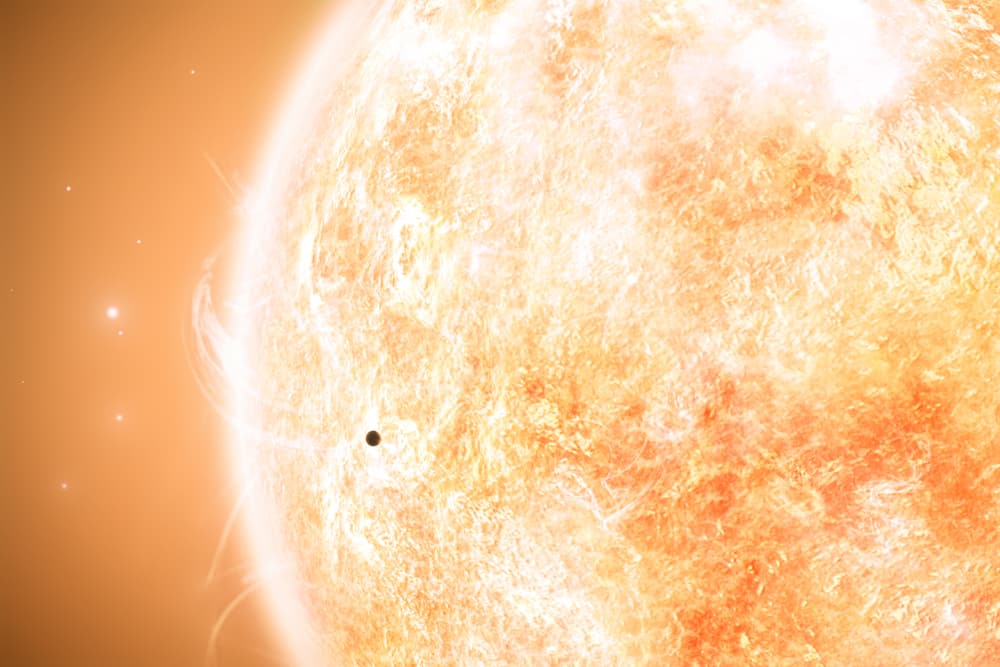
Past missions to the Sun
Many of the spacecraft that study the Sun do not go to the Sun. For example, while the Solar and Heliospheric Observatory (SOHO) is the longest-running solar observatory to date, it sits at LaGrange Point 1, not even halfway to the Sun from Earth as it provides an uninterrupted view of the Sun.
However, we have sent five missions to the Sun.
Helios-A and Helios-B (renamed Helios 1 and Helios 2 after launch) were a pair of probes launched into orbit around the Sun to study our star. It was a joint venture between German Aerospace Center (DLR) and NASA. The project set a maximum speed record for spacecraft of 157,078 mph (252,792 km/h or 70,220 m/s).
Helios-A was launched on the first operational flight of the Titan IIIE rocket and the same procedure was used for Helios-B. There were several instrumental issues for Helios-A so multiple adjustments were made to Helios-B to address these concerns. Today they are no longer functional, but remain in orbit around the Sun. Below are key mission events:
Helios-A took less than three months from launch to the first perihelion while Helios-B took just about three months. Neither used flybys.
Ulysses was a joint ESA-NASA mission designed to study and explore the solar poles in three dimensions. The mission originally planned to utilize two spacecraft, one from ESA and one from NASA, each of which would have flown over opposite poles and was dubbed the International Solar Polar Mission (ISPM). However, NASA canceled its spacecraft and instead focused on providing instruments, the launch vehicle, and communications and tracking.
Ulysses completed nearly three complete orbits of the Sun during more than 18 years in service and was the first mission to survey the space environment above and below the poles of our Sun. The 818-pound (371-kilogram) Ulysses spacecraft launched from the Space Shuttle Discovery.
From launch in October 1990 to the beginning of observations in June 1994, Ulysses took 3 years and 8 months, though many count it reaching the region of space around it a year earlier.
It’s also important to remember its closest approach was in March 1995 so we have to consider what qualifies as “arriving at the Sun”. Ulysses first did a gravity assist at Jupiter, accounting for the extended time period.
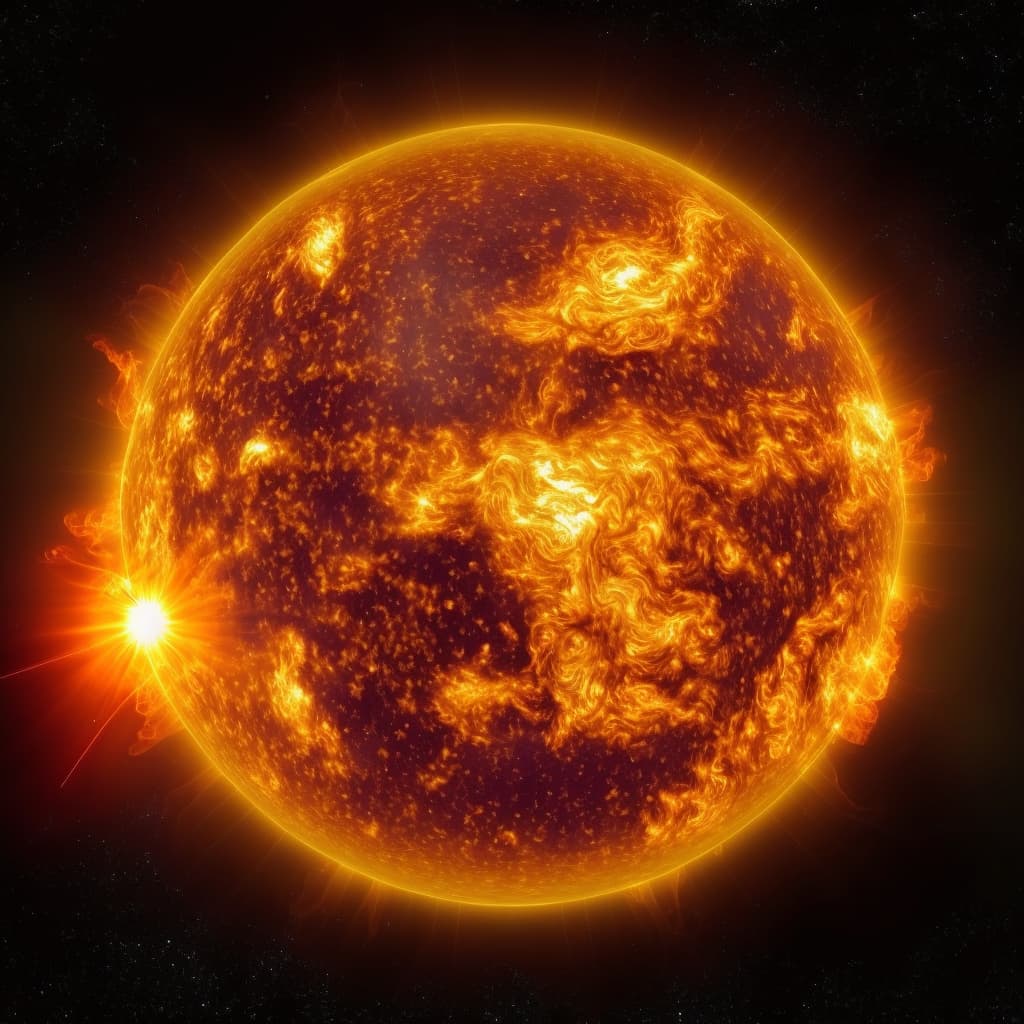
Parker Solar Probe
Often known as the mission to “touch the Sun”, Parker Solar Probe is focused on revolutionizing our understanding of our star over the course of 24 orbits around the Sun. The Solar Probe Plus Spacecraft at 1,510 pounds (685 kilograms) at launch sat on top of a Delta IV-Heavy with Upper Stage launch vehicle.
The mission’s route will utilize seven Venus flybys over nearly seven years to gradually shrink its orbit around the Sun. Check out this animation of the Parker Solar Probe’s orbits around the Sun .
Below are key dates in the mission, separated by year for easier reading. Note that perihelion means the point in an orbit that is closest to the Sun (think “peri” like perimeter or perilous or p for proximity) while aphelion is the point in an orbit that is furthest away.
In August 2023, Parker’s current speed is about 32,508 mph (52,315 kph) and since it is currently heading toward Venus for its sixth flyby, its current distance from the Sun is quite far: at over 69,191,441 miles (111,352,830 km).
At its closest approach in 2025, it will come as close as 3.83 million miles (6.16 million kilometers) to the Sun, a tenth of the orbit of Mercury, (on average, about 36 million miles from the Sun), and about seven times closer than the current record holder (the Helios 2 spacecraft, which came within 27 million miles in 1976).
At this point, it will zip around the Sun at approximately 430,000 mph (700,000 kph), fast enough to travel from Philadelphia to Washington, D.C., in one second. Its orbit will be 88 days. 8.92 miles per second (14.35 km/s)
The first perihelion was achieved only three months after launch, even including a Venus flyby in contrast to the Helios crafts.
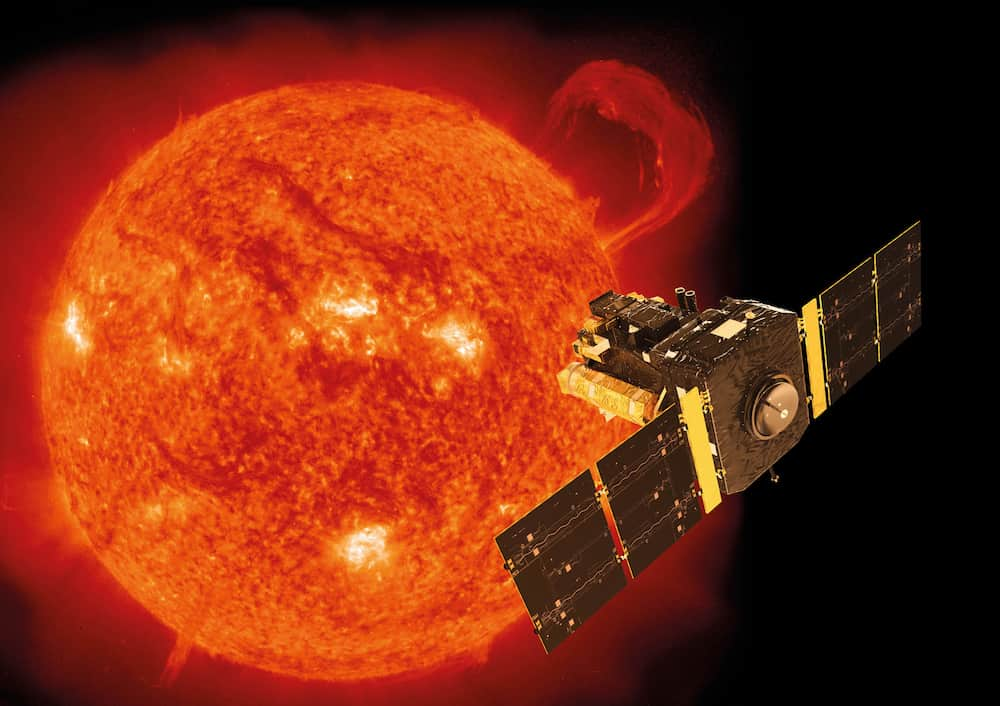
Solar Orbiter
Solar Orbiter is a joint ESA and NASA mission delving into the conundrum of how the Sun creates and controls the ever-changing space environment throughout our solar system by studying the heliosphere, the bubble of charged particles and magnetic fields blown out to over twice the distance to Pluto.
Over the course of 22 orbits around the Sun, it is traveling as close as 26 million miles (42 million km) from the Sun to study the magnetic fields, waves, energetic particles, and plasma escaping the Sun. It launched on a United Launch Alliance Atlas V 411 rocket, utilized multiple gravity assists from Earth and Venus, and then about 3.5 years later entered an elliptical orbit around the Sun, completing one revolution every 168 days.
It is using gravity assists from Venus and Earth to gradually lift itself out of the ecliptic plane that all the planets lie in up to an angle of about 24 degrees above the solar equator (33 degrees if the extended mission is approved) to capture the first images of the poles from high latitudes. It can hover over specific spots when it almost matches the Sun’s rate of rotation at its fastest speed.
Together with Parker Solar Probe, they are providing never before seen data to help us better understand our star.
From launch to first perihelion, Solar Orbiter took 4 months to arrive at the Sun.
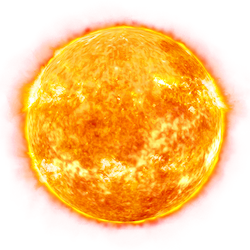
General Estimate for Probes
As we have seen, you can reach 1st perihelion in orbit in 3 months, even with a Venus flyby. Subsequent gravity assists over months and even years are typically used to get closer and closer without getting sucked into the star.
Theoretical Estimates
What about humans traveling to the Sun? It’s important to note that currently there is no safe way to send a crewed mission to the Sun or even Mercury. The temperatures and radiation threats are too high. In completely theoretical terms, the fastest that humans have ever traveled in space is 24,791 mph (39,897 km/ hr), which was achieved by the returning Apollo 10 astronauts in May 1969. At that speed, we could theoretically reach the Sun in about 155 days or about five months, but that wouldn’t include the time needed to slow down.
In terms of light speed, light from the sun takes about 8 minutes and twenty seconds to reach the Earth, so if in the future we could travel at the speed of light, which the current understanding of physics says is an impossibility for anything besides light, it would take less than 8 and a half minutes.
The Sun sits about 92,955,807 miles (149,597,870 kilometers) away. The calculation for how long it would take to get there is highly dependent on the speed achieved, the route, the number of “stops”, the number of gravity assists, and the approach procedure in which we slow down. Do we go straight to the Sun or utilize gravity-assist maneuvers from other planets, especially to save on fuel?
Based on past and current missions to our star, it takes probes about 3-4 months to “arrive” at a first perihelion in orbit. However, subsequent gravity assists are often utilized to get us closer and closer. It is important to remember that crewed missions to the Sun are not considered viable due to radiation concerns (even Mercury is a no-go for humans), but who knows what innovations the future may hold? Perhaps someday in the future, we can protect astronauts in a spacecraft enough to have them visit inside Mercury’s orbit or even closer to the Sun.

Written by Sarah Hoffschwelle
Sarah Hoffschwelle is a freelance writer who covers a combination of topics including astronomy, general science and STEM, self-development, art, and societal commentary. In the past, Sarah worked in educational nonprofits providing free-choice learning experiences for audiences ages 2-99. As a lifelong space nerd, she loves sharing the universe with others through her words. She currently writes on Medium at https://medium.com/@sarah-marie and authors self-help and children’s books.
Explore more space travel stories 🚀
This page is part of our collection of astronomy articles . If you enjoyed the read, then you’ll love the following articles.
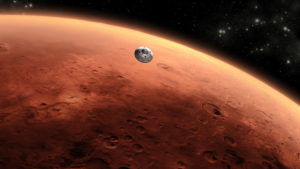
The Duration of a Voyage to Mars: A Detailed Analysis
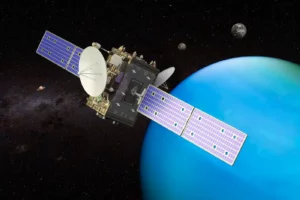
How long does it take to reach the Uranus?
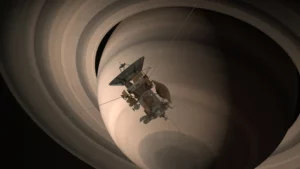
Countdown to Saturn: The Travel Time Involved

How long does it take to reach the Moon?
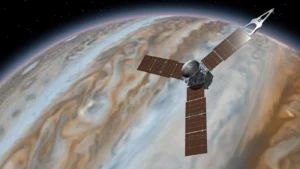
How long does it take to get to Jupiter?
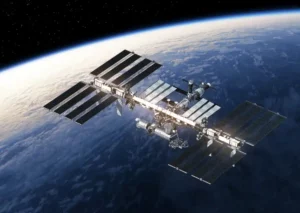
How long does it take to reach the ISS?
- Virtual Events
- BBC Astronomy
- How we review
- Telescope mounts
- Finderscopes
- Astronomy accessories
- Top astro kit
- Astronomy for beginners
- Astronomy DIY
- Buyers' guides
- Online Planetarium
- Astronomy news
- Astrophoto guides
- Send us your images
How long would it take to get to the Sun?
If you could drive to the Sun from Earth, how long would it take? And how long does it take spacecraft to get there?
Jenny Winder
Depending on your preferred method of transport, it would take you 19 years to reach the Sun on a plane travelling at 885 km/h (550 mph) or 177 years to drive at 96 km/h (60 mph) or 3,536 years to walk there at 4.8 km/h (3 mph).
A photon of light makes the journey from the Sun to Earth in just 8 minutes and 20 seconds.
Earth orbits the Sun at an average distance of 150 million km (93 million miles), which we call 1 Astronomical Unit.
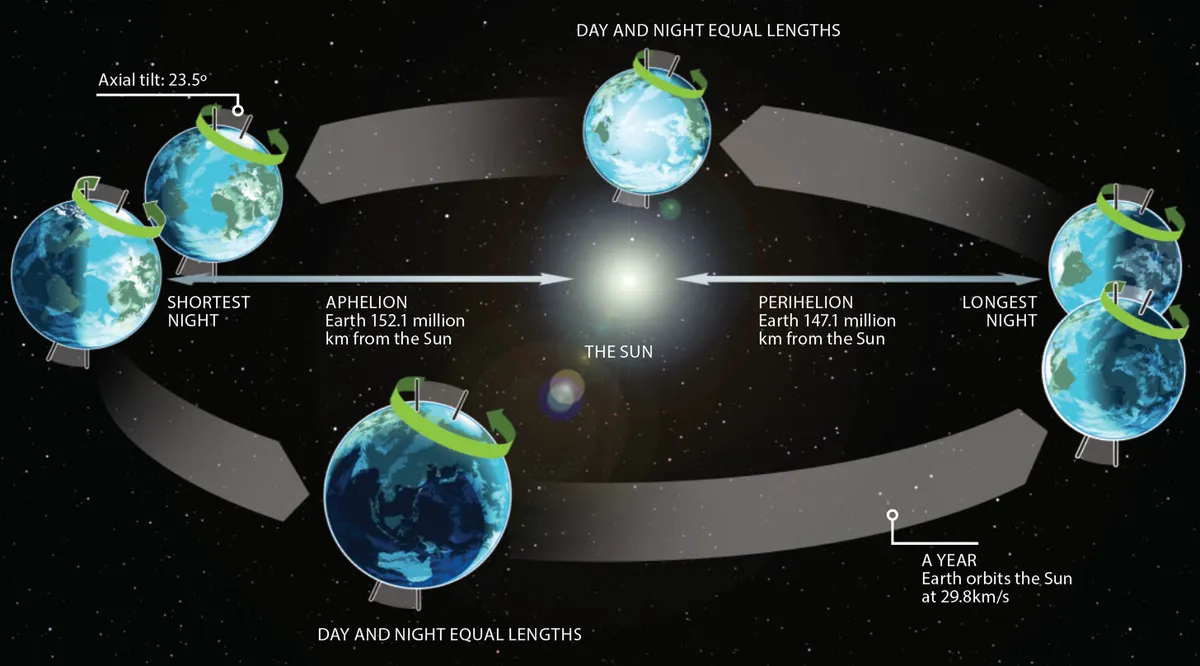
At perihelion Earth is 147 million km (91.4 million miles) from the Sun, and at aphelion it is 151 million km (94 million miles) away.
Spacecraft use gravity assists from Venus to reach the Sun and repeat the process to achieve closer passes of the Sun's surface.
ESA's Solar Orbiter , launched on 10 February 2020, came within 77 million km (48 million miles) by June of that year.

NASA's Parker Solar Probe , launched on 12 August 2018, is the fastest object ever built.
Using the first of what will end up being 7 flybys of Venus, it reached the Sun less than 3 months later on November 6.
At its closest approach, Parker Solar Probe will be just 6 million km (3.8 million miles) from the Sun's surface, 7 times closer than any previous mission, and reach speeds of 690,000 km/h (430,000 mph)
The spacecraft will endure temperatures of 1,370 degrees Celsius (1643 Kelvin).
Due to the 11.4 cm (4.5 inch) heat shield, which weighs just 73 kg (160 lbs), the instruments inside will remain around 29 degrees C.
Share this article

Science writer

- Terms and conditions
- Manage preferences

How Long Would It Take To Get To The Sun? Understanding Space Travel Timelines
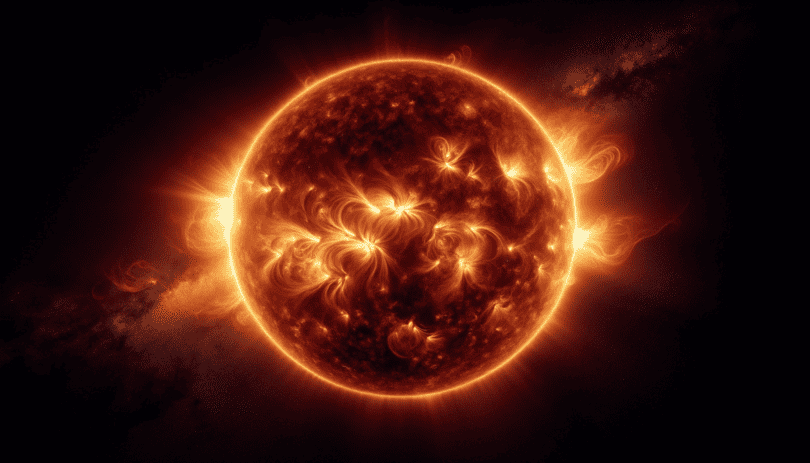
Understanding the vastness of space can be daunting, and nothing puts our cosmic neighborhood into perspective quite like considering the journey from Earth to our closest star.
If we were to imagine the journey to the Sun, which lies about 93 million miles from Earth, using various modes of transportation, the timeframes would be vastly different.
A commercial airliner, cruising at a speed of 550 miles per hour, would take an estimated 19 years to reach our star if it could fly directly through space.
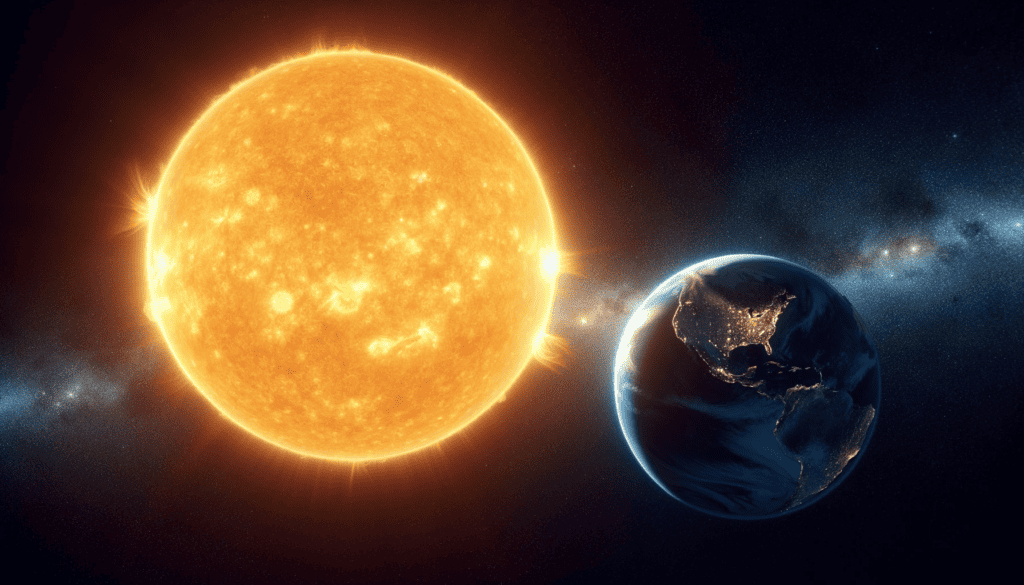
Rockets, on the other hand, are much faster; for instance, the Parker Solar Probe, one of the fastest man-made objects, travels at speeds up to 330,000 mph relative to the Sun, which would theoretically allow it to reach the Sun in about 13 hours.
However, no spacecraft can maintain such speeds over the entire distance. Driving a car at a constant 60 mph to the Sun would require an unimaginable 177 years.
In stark contrast, traveling at the speed of light, which is about 186,282 miles per second, we would arrive at the Sun in just 8 minutes and 20 seconds, the time it takes for sunlight to reach Earth.
Understanding The Journey To The Sun
Embarking on a voyage to the Sun requires an understanding of the immense distances within our solar system, the speed at which spacecraft can travel, and how these factors translate into travel time.
Distance and Scale of the Solar System
The Sun is the center of our solar system, and it’s a staggering 93 million miles (about 150 million kilometers) from Earth.
This immense distance is often referred to as one astronomical unit (AU), which is the standard measure of space used to describe the scale of the solar system.
To put this into perspective:
- Earth to Sun : ~93 million miles (1 AU)
- Mars to Sun : ~142 million miles (1.5 AU)
The vast scale of the solar system makes interplanetary travel a monumental challenge.
Speed and Time Calculations
Travel time to the Sun hinges on the speed at which a spacecraft can travel.
The record for the fastest human-made object is held by the Parker Solar Probe , which is expected to reach speeds up to 430,000 mph (700,000 kph).
At that rate, it would still take many days to reach our star.
For theoretical calculations, if one could travel at the speed of light:
- Speed of Light : 299,792 km/s
- Time to the Sun at Light Speed : roughly 8 minutes and 20 seconds
However, even the fastest current spacecraft travel considerably slower than light speed, turning minutes into days, months, or more.
Historical and Theoretical Missions
Historical missions like Apollo 10 , which set the record for the highest speed relative to Earth at 24,791 mph (39,897 kph), hint at the capabilities human technology has reached in space travel.
However, no manned mission has yet approached the Sun.
In exploring theoretical missions to the Sun, entities like NASA consider factors like:
- Spacecraft Speed : How fast it can go
- Orbit and Trajectory : The path taken to harness planetary gravity assists
- Solar Radiation : Protection against intense heat and radiation
Understanding the journey to the Sun entails grappling with these vast distances, high speeds, and the intricacies of space travel — a realm where every second and mile counts deeply.
Physics and Challenges of Space Travel
Navigating gravitational forces.
Gravitational forces in space present a significant challenge. Gravity from planetary bodies can both hinder and aid a spacecraft.
NASA often uses a technique known as a gravity assist or flyby , which cleverly utilizes the gravitational pull of planets to accelerate spacecraft without using additional fuel.
However, the mass of the spacecraft and the energy needed to overcome gravitational forces must be meticulously calculated to ensure a successful mission.
Solar Radiation and Temperature Effects
Exposure to solar radiation and extreme temperature fluctuations are major considerations for any mission to the Sun.
The spacecraft must withstand intense radiation not only from the Sun’s light but also from solar wind —a stream of charged particles emanating from the Sun’s corona .
Additionally, managing the extreme temperatures—both hot and cold—is essential to protect onboard instruments and maintain functionality.
Materials and design play a key role; they must be chosen to endure the harsh conditions, including the proximity to the Sun’s corona, where temperatures can reach millions of degrees Celsius.
Technological Advancements and Future Projections
Exploring our celestial neighborhood requires cutting-edge technology and ambitious projects.
Recent advances have notably increased the speed and capabilities of spacecraft, making journeys to the sun a more tangible possibility.
Significant Milestones and Probes
NASA has been at the forefront of solar exploration. The Parker Solar Probe , launched in 2018, is one of the most significant steps towards our star.
Equipped with a heat shield capable of withstanding temperatures of nearly 2,500 degrees Fahrenheit, it will get closer to the sun than any previous spacecraft.
Alongside Parker, the Solar Orbiter , a collaboration between NASA and the European Space Agency ( ESA ), set off in 2020 to study the sun’s poles, an area not well covered by prior missions.
Historically, other key probes include the twin Helios spacecraft, which set records in the late 1970s for the closest approach to the sun.
Ulysses furthered our understanding of solar phenomena. The Solar Dynamics Observatory (SDO) and Solar and Heliospheric Observatory (SOHO) remain vital in observing the sun’s activity and providing data that could influence future expeditions.
Frequently Asked Questions
What is the duration of a journey to the sun at the speed of light.
If we could travel at the speed of light, which is approximately 299,792 kilometers per second, it would take about 8 minutes and 20 seconds to reach the Sun from Earth.
How long would a spacecraft take to travel from Earth to Neptune?
The journey from Earth to Neptune would take a spacecraft about 12 years, taking into account the paths and propulsion systems we currently use.
How many years could it take for a spacecraft to reach Venus?
Using conventional technology, a mission to Venus can take anywhere from about 100 days to 6 months, depending on the alignment and the specific trajectory chosen.
Approximately how much time would a mission to Saturn require?
A trip to Saturn typically requires about 7 years, considering past missions like the Cassini spacecraft which used gravity assists to reach the ringed planet.
What is the closest distance a spacecraft can approach the Sun without being damaged?
Spacecraft are designed to endure the intense heat and radiation near the Sun, like the Parker Solar Probe which is expected to get within about 6.16 million kilometers (3.83 million miles) of the Sun’s surface.
What is the estimated time frame for a trip to Jupiter from Earth?
A spacecraft traveling to Jupiter would take approximately 6 years to reach the gas giant, a timeline proven by missions like Galileo and Juno.
You may also like

Solar Probes: Venturing Close to the Sun—Unraveling...

The Sun’s Atmosphere: Layers and Features...
The physics of the sun: fusion and energy production..., coronal mass ejections: understanding their impact on..., viewing the sun safely: essential tips for harmless..., unraveling the mystery of solar wind: key insights..., about the author.
Welcome to the cosmos through Beth's eyes! With a passion that spans the vastness of the universe, Beth is our resident space enthusiast, bringing to life the wonders of the cosmos with a blend of imagination and insight.
Beth's writing is a unique blend of research and human creativity, meticulously crafted and edited to ensure each piece is as limitless and intriguing as space itself.
Her ability to translate complex astronomical concepts into engaging, understandable content makes her a favorite among our readers, both young and old.
Leave a Comment X
You must be logged in to post a comment.

Suggested Searches
- Climate Change
- Expedition 64
- Mars perseverance
- SpaceX Crew-2
- International Space Station
- View All Topics A-Z
Humans in Space
Earth & climate.
- The Solar System
The Universe
Aeronautics, learning resources, news & events.
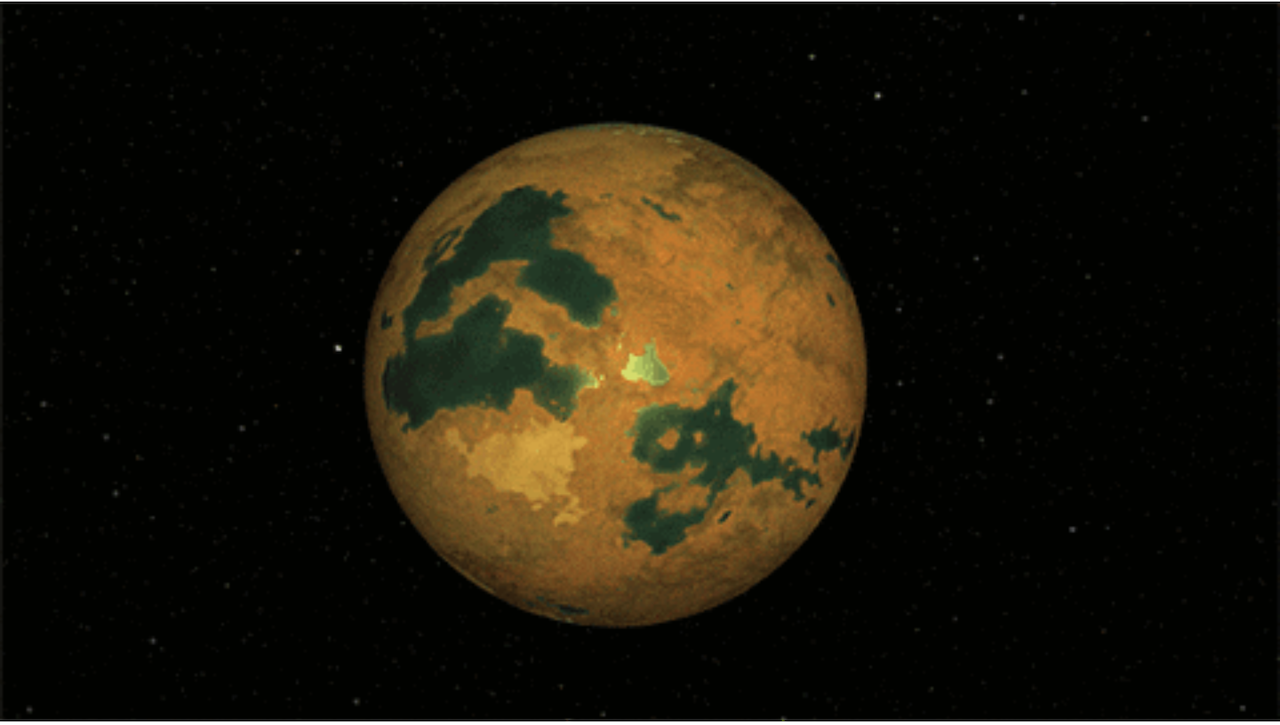
Discovery Alert: Spock’s Home Planet Goes ‘Poof’
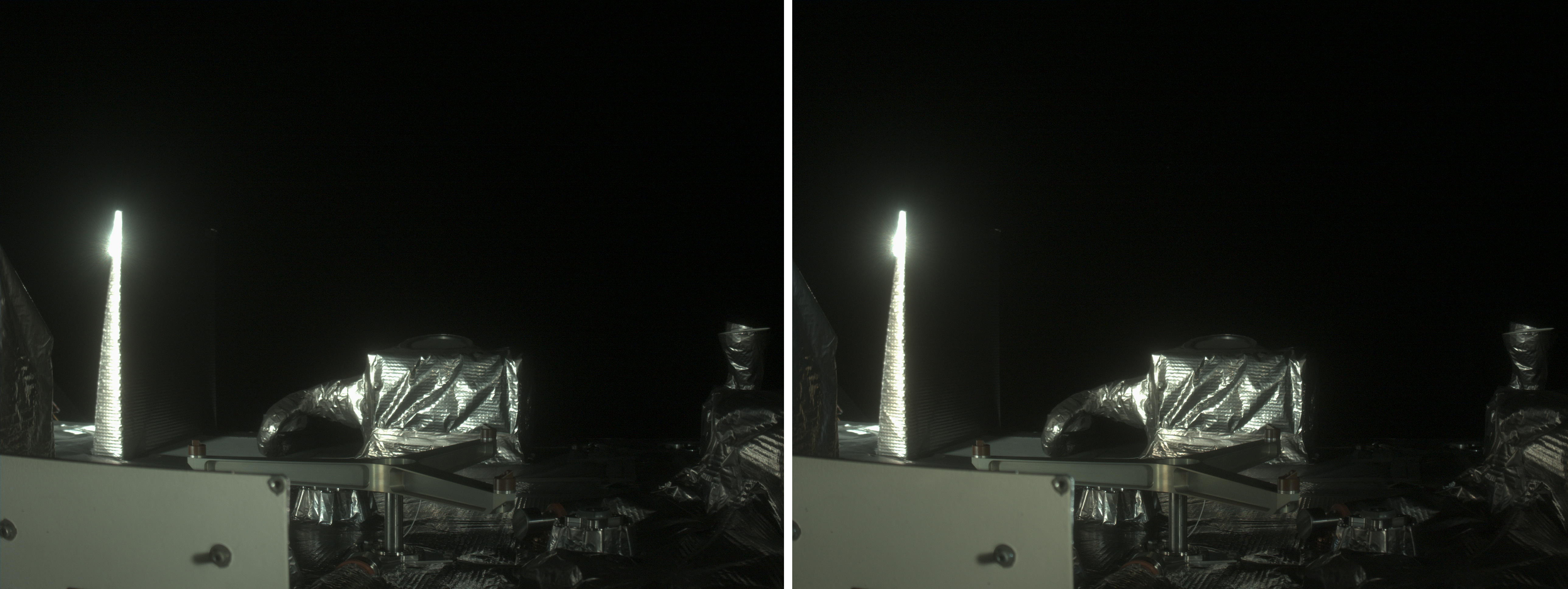
NASA’s OSIRIS-APEX Unscathed After Searing Pass of Sun

Ongoing Venus Volcanic Activity Discovered With NASA’s Magellan Data
- Search All NASA Missions
- A to Z List of Missions
- Upcoming Launches and Landings
- Spaceships and Rockets
- Communicating with Missions
- James Webb Space Telescope
- Hubble Space Telescope
- Why Go to Space
- Astronauts Home
- Commercial Space
- Destinations
- Living in Space
- Explore Earth Science
- Earth, Our Planet
- Earth Science in Action
- Earth Multimedia
- Earth Science Researchers
- Pluto & Dwarf Planets
- Asteroids, Comets & Meteors
- The Kuiper Belt
- The Oort Cloud
- Skywatching
- The Search for Life in the Universe
- Black Holes
- The Big Bang
- Dark Energy & Dark Matter
- Earth Science
- Planetary Science
- Astrophysics & Space Science
- The Sun & Heliophysics
- Biological & Physical Sciences
- Lunar Science
- Citizen Science
- Astromaterials
- Aeronautics Research
- Human Space Travel Research
- Science in the Air
- NASA Aircraft
- Flight Innovation
- Supersonic Flight
- Air Traffic Solutions
- Green Aviation Tech
- Drones & You
- Technology Transfer & Spinoffs
- Space Travel Technology
- Technology Living in Space
- Manufacturing and Materials
- Science Instruments
- For Kids and Students
- For Educators
- For Colleges and Universities
- For Professionals
- Science for Everyone
- Requests for Exhibits, Artifacts, or Speakers
- STEM Engagement at NASA
- NASA's Impacts
- Centers and Facilities
- Directorates
- Organizations
- People of NASA
- Internships
- Our History
- Doing Business with NASA
- Get Involved
- Aeronáutica
- Ciencias Terrestres
- Sistema Solar
- All NASA News
- Video Series on NASA+
- Newsletters
- Social Media
- Media Resources
- Upcoming Launches & Landings
- Virtual Events
- Sounds and Ringtones
- Interactives
- STEM Multimedia
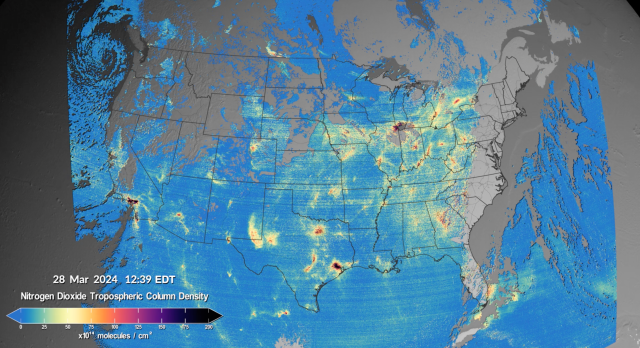
NASA Releases New High-Quality, Near Real-Time Air Quality Data

Twin NASA Satellites Ready to Help Gauge Earth’s Energy Balance

25 Years Ago: STS-96 Resupplies the Space Station

Welcome Back to Planet Earth, Expedition 70 Crew!

Astronaut Exercise

Eleasa Kim: Pioneering CLDP Payload Operations and Cultural Integration
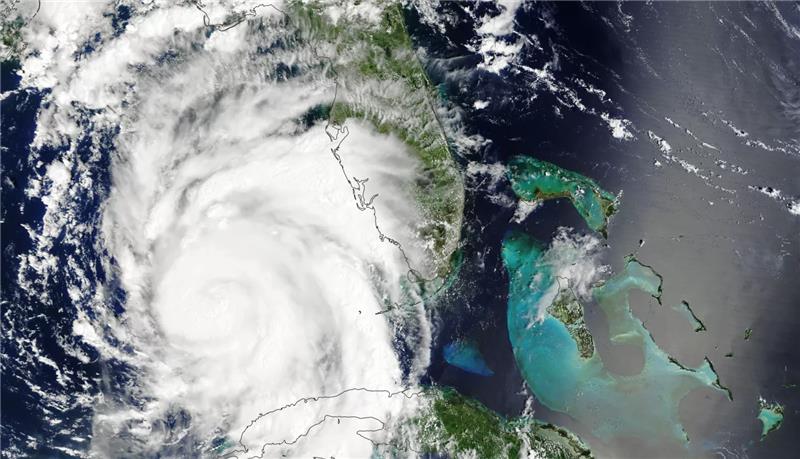
NASA, IBM Research to Release New AI Model for Weather, Climate

What’s Up: June 2024 Skywatching Tips from NASA

The Moon and Amaey Shah
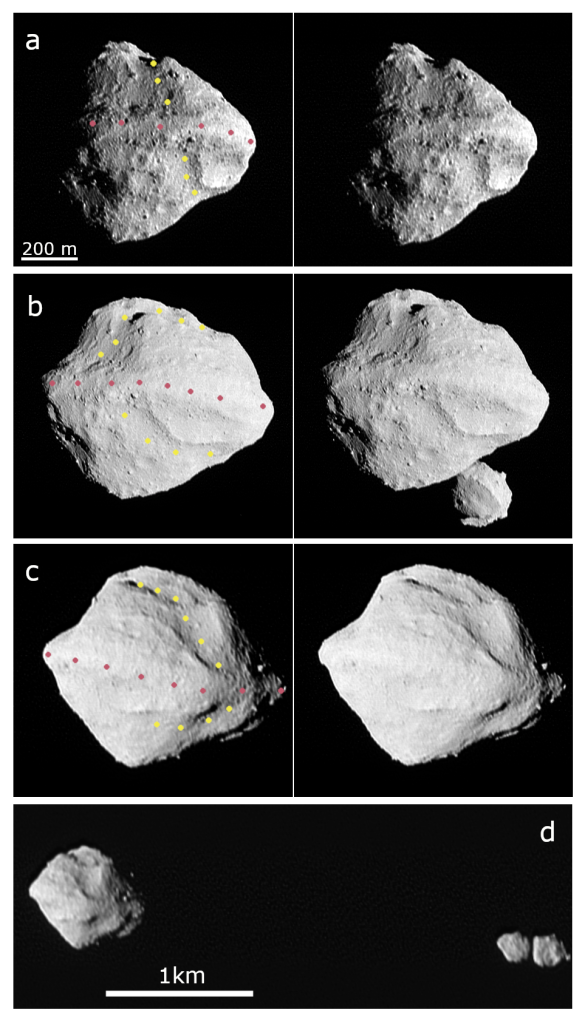
NASA Lucy Images Reveal Asteroid Dinkinesh to be Surprisingly Complex

Travel Through Data From Space in New 3D Instagram Experiences
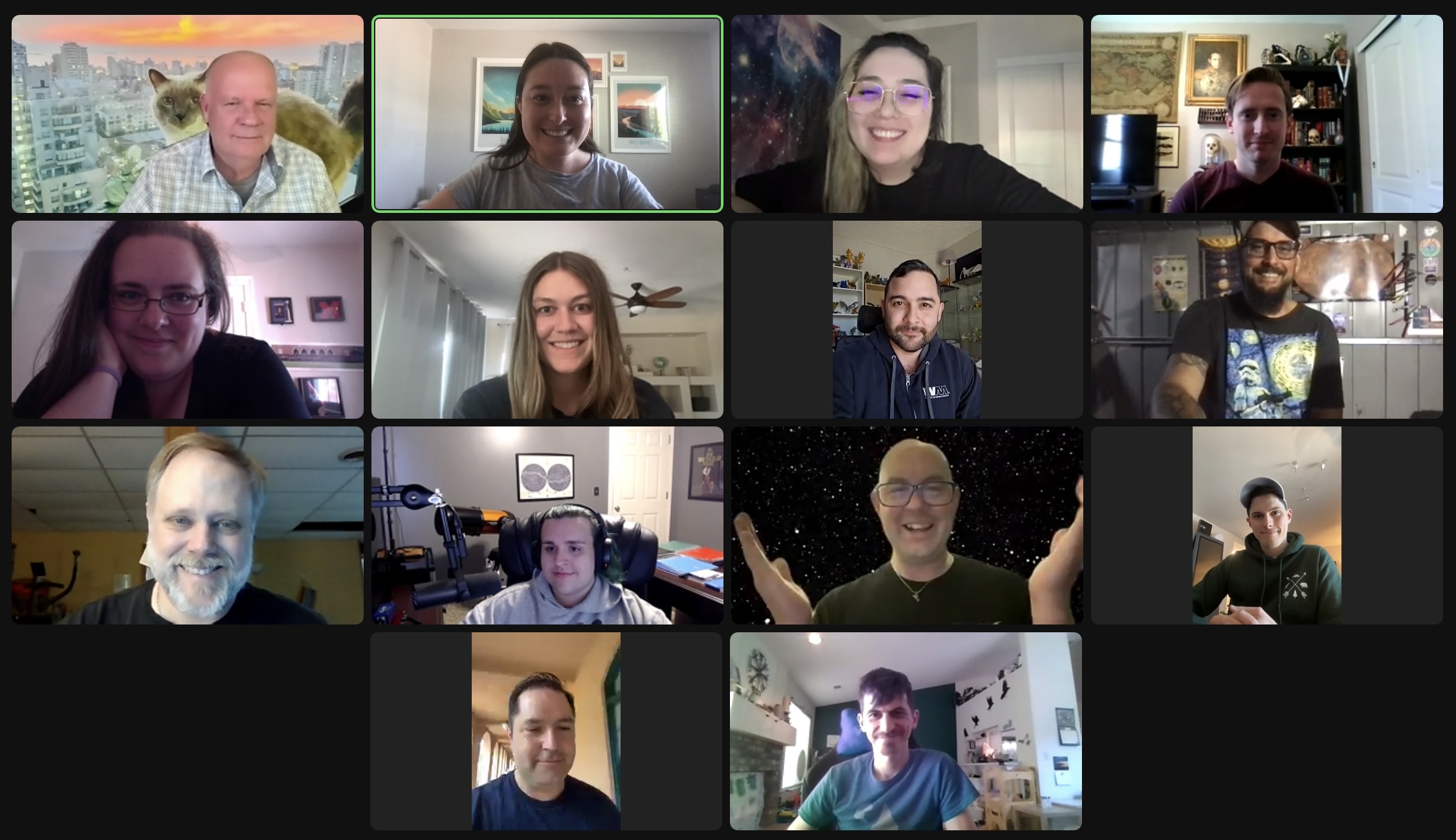
Arizona Students Go on an Exoplanet Watch

NASA, Industry to Start Designing More Sustainable Jet Engine Core

Aviary: A New NASA Software Platform for Aircraft Modelling

NASA’s X-59 Passes Milestone Toward Safe First Flight

Tech Today: Measuring the Buzz, Hum, and Rattle

NASA to Measure Moonquakes With Help From InSight Mars Mission

NASA’s Compact Infrared Cameras Enable New Science

NASA Around the World: Interns Teach Virtual Lessons in Kenya
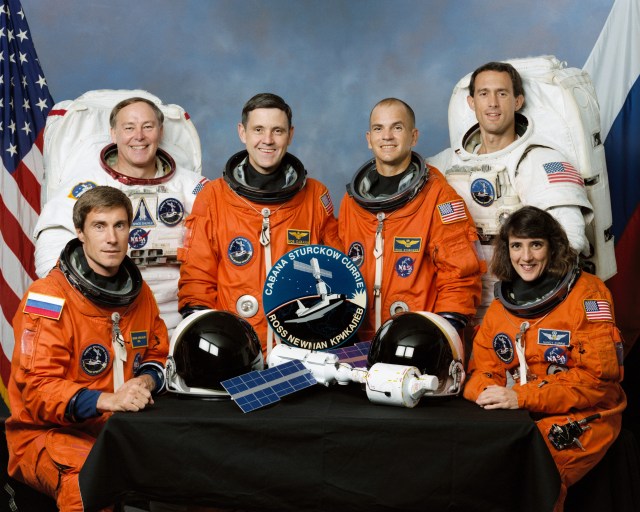
15 Years Ago: First Time all Partners Represented aboard the International Space Station

Johnson Celebrates AA and NHPI Heritage Month: Britney Tang

Diez maneras en que los estudiantes pueden prepararse para ser astronautas

Astronauta de la NASA Marcos Berríos

Resultados científicos revolucionarios en la estación espacial de 2023
It’s surprisingly hard to go to the sun.
Sarah Frazier

The Sun contains 99.8 percent of the mass in our solar system. Its gravitational pull is what keeps everything here, from tiny Mercury to the gas giants to the Oort Cloud , 186 billion miles away. But even though the Sun has such a powerful pull, it’s surprisingly hard to actually go to the Sun: It takes 55 times more energy to go to the Sun than it does to go to Mars.
Why is it so difficult? The answer lies in the same fact that keeps Earth from plunging into the Sun: Our planet is traveling very fast — about 67,000 miles per hour — almost entirely sideways relative to the Sun. The only way to get to the Sun is to cancel that sideways motion.
Since Parker Solar Probe will skim through the Sun’s atmosphere, it only needs to drop 53,000 miles per hour of sideways motion to reach its destination, but that’s no easy feat. In addition to using a powerful rocket, the Delta IV Heavy, Parker Solar Probe will perform seven Venus gravity assists over its seven-year mission to shed sideways speed into Venus’ well of orbital energy. These gravity assists will draw Parker Solar Probe’s orbit closer to the Sun for a record approach of just 3.83 million miles from the Sun’s visible surface on the final orbits.
Though it’s shedding sideways speed to get closer to the Sun, Parker Solar Probe will pick up overall speed, bolstered by Sun’s extreme gravity — so it will also break the record for the fastest-ever human-made objects, clocking in at 430,000 miles per hour on its final orbits.
Banner image: Illustration of NASA’s Parker Solar Probe at the Sun. Credits: NASA’s Goddard Space Flight Center
Media Contact: Sarah Frazier NASA’s Goddard Space Flight Center , Greenbelt, Md.
Explore More

Planets rule the a.m., and what’s that bright light? Saturn and Mars meet up with…

Sometimes a story about a NASA volunteer just grabs your heart and won’t let go.…

NASA Goddard, Maryland Sign Memo to Boost State’s Aerospace Sector
Related terms.
- Goddard Space Flight Center
- Parker Solar Probe (PSP)
- Planetary Science Division

The Nine Planets
How Long Does Earth Take to Go Around the Sun?
We will learn more about Earth in this post and some of the impressive statistics that surround our home planet and its role in our solar system. So if you want to find out the answers to Earth’s orbital period read on.
What Is the Earth?
The third of four terrestrial planets from the sun, the Earth is the only known astronomical object in our solar system that can and does support life. One of the key reasons it can support life is its high volume of surface water which covers about 70.8% of the planet, the rest being made up of continental landmasses.
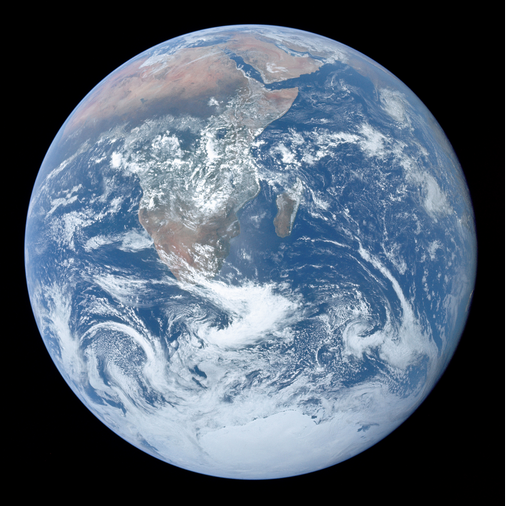
The planet Earth does not have a perfectly circular orbit, as such it is at slightly differing distances from the Sun throughout the year. On average we are 93 million miles (150 million kilometers) away from the sun, sometimes closer or further away depending on our orbit. The difference though is only by a few million kilometers so is not hugely significant.
Earth’s Formation
Around 4.5 billion years ago when the sun was first forming so too were the planets of our solar system including the Earth itself. Swirling clouds of gas and dust were drawn together to form Earth in a process that may have taken 70 – 100 million years to complete.
During this development period it is a widely accepted theory that Earth’s moon formed around 4.5 billion years ago. This was shortly after Earth itself was drawn together. It is thought a huge Mars sized object struck the newly formed planet Earth ejecting debris into orbit around the planet.
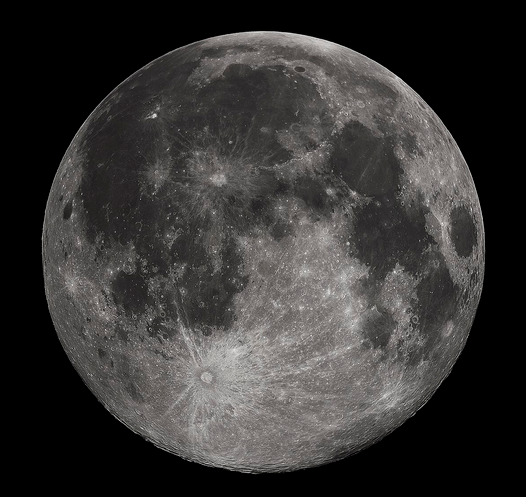
The Debris from this proposed impact of Earth was held in orbit around the planet eventually forming into the moon we know today. Pulled together by gravity this same gravity exists today holding the moon together and affecting the Earth as well.
Using isotopes dating from samples collected from the moon’s surface we have been able to determine that it formed around 50 million years after the proposed origins of the solar system itself.
Formation of the Atmosphere
Our planet’s atmosphere is key to the existence of life on this planet and this along with our oceans was formed by volcanic activity and outgassing. Water vapor from these sources condensed into our planet’s oceans. It is possible that sufficient water may have been on Earth since its formation.
The Earth’s Crust
At one time the Earth’s crust would have been a molten outer layer but over time this cooled into the solid crust we have today. At the center of Earth there is a molten core which even to this day plays a role in pushing new material to the surface and adding to the planet’s continental crust.
Billions of years ago our planet was far more volcanic than it is today but even in modern times volcanic activity and earthquakes remain as proof of continental crust development and movement.
The Future for Our Planet
The sun is important to the future of our planet and it is estimated that over the next 1.1 billion years its luminosity will increase by 10%. Over the next 3.5 billion years it may increase by up to 40% and this is a very considerable issue.
These increases in luminosity will serve to increase the surface temperature of Earth which will in turn accelerate the inorganic carbon cycle. The result of this will be a reduction in CO2 to levels that will be toxic to plant life.
In the next 100 – 900 million years these changes may lower CO2 so greatly that plant life will die off, decreasing oxygen levels making Earth unsuitable to support life any longer. Within 1.5 billion years it is estimated that our planet’s surface temperature may reach an average of 212 degrees Fahrenheit.
What Is the Sun?
The orb that is visible in our daylight sky which we know as the sun is in fact a star. This star is classified as a yellow dwarf and is central to our solar system. Earth and the other planets of our solar system orbit this vast star. In fact it is our own planet’s rotation and orbit which creates the appearance of the sun moving across our sky. It itself is stationary as we revolve around it.

How Big Is the Sun?
The sun on a clear day is visible from the earth and in fact we should never stare directly at it. This is despite it being 93 million miles away so just how big is this giant orange orb? Scientists estimate that the sun has a radius of roughly 435,000 miles.
This may sound massive but there are many known stars which are much larger. In comparison to our planet however the son is roughly 330,000 times the mass of earth and we could fit our planet into the sun 1.3 million times.
What Holds the Sun Together?
The sun because it is a star is actually a huge ball of gas which is held together by its own internal gravitational forces. It is made up of several regions which include in order from the center out:
- Radioactive zone
- Convection zone
- Photosphere
- Chromosphere
- Transition zone
Once material exits the corona of the sun at supersonic speeds, it becomes what is known as a solar wind. This solar wind forms a huge magnetic bubble of sorts around the sun which is known as the heliosphere. It is this heliosphere that extends beyond the orbit of all the planets in our solar system. Essentially our planet as well as all others in the solar system are held within the sun’s atmosphere.
What the Sun Achieved on Earth
The high energy ultraviolet radiation from the sun is actually hazardous to all life however it was this energy that would play a pivotal role in creating life on earth. It was this energy that would provide the power to turn simple organic molecules into more complex ones. These more complex organic molecules would in turn become what is known as the building blocks for life.
Over billions of years these organic molecules became single cell organisms and then multicell organisms. As time progressed the gaseous makeup of the atmosphere would change and the protective gas layers helped filter the worst radiation from the sun.
Life would evolve and thrive including both flora and fauna species with the planet seeing multiple phases of species die off and be replaced. Throughout all of this the sun served as a power source feeding the plant life which then were consumed by the living creatures.
In terms of this planet’s history human existence represents a mere fraction. In fact modern day humans only date back between 40 – 50 thousand years on this planet having been pre-dated by other hominid species by several hundred thousand years.
Whereas our understanding of orbital periods on other bodies in our solar system is somewhat of an estimate we obviously know far more about our own planet. In fact we understand our planet so accurately that we in essence have two answers regarding Earth’s orbital period around the Sun.
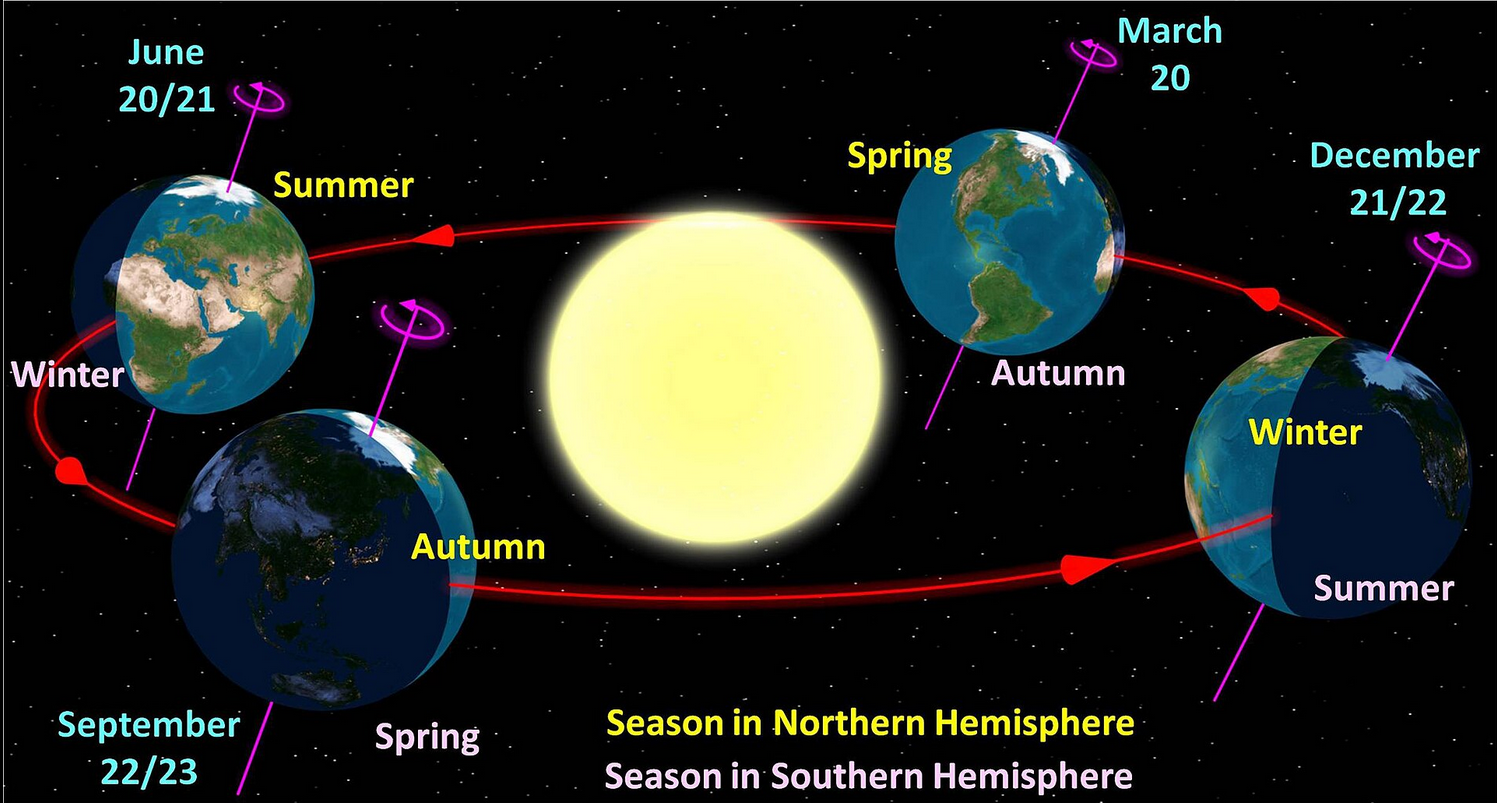
On Earth we count a full rotation of the Sun by our planet as being 365 days although in fact it is fractionally longer than that. In order to compensate for this every fourth year on our planet is deemed a leap year, the next of which will be 2024. This extra day takes Earth’s calendar year to 366 days with the extra day being attached to the end of February. To be completely accurate then Earth’s orbital period is 365.2422 days long. This is the exact amount of time it takes our planet to complete its journey around the Sun.
Final Thoughts
Our distance from the sun is hugely significant in terms of its effects on our planet and the sustained future of our planet. In roughly 5 billion years the sun is projected to start to expand and turn red. Although it will not move it will technically get closer to the planet Earth and one day maybe even engulf it.
Right now our proximity to the sun is perfect for creating a thriving planet with plants and animals and no other planet in our solar system has the perfect conditions for life. Scientists are however still interested to find out if any of them may have been home to life in the distant past or may develop life at some point in the future.
We have completed maintenance on Astronomy.com and action may be required on your account. Learn More

- Login/Register
- Solar System
- Exotic Objects
- Upcoming Events
- Deep-Sky Objects
- Observing Basics
- Telescopes and Equipment
- Astrophotography
- Space Exploration
- Human Spaceflight
- Robotic Spaceflight
- The Magazine
The Sun: Facts, size, and fate of Earth’s blazing star
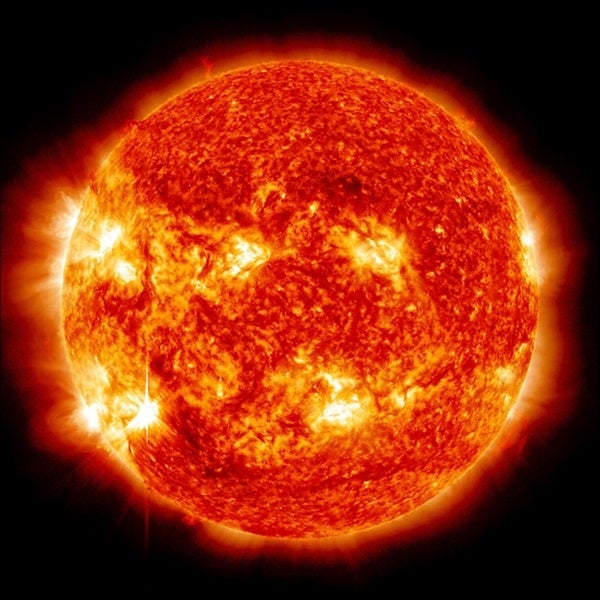
Gazing up at the clear blue sky, our eyes are often drawn to the Sun, that magnificent burning orb that illuminates our days, warms our planet, and supports the growth of our food. But how much do we really know about our closest star?
Astronomers have been studying it for centuries, and in that time, they’ve uncovered countless fascinating details about this fiery giant. So, let’s explore some of the most intriguing features and dive into the impact it has on Earth.
What is the Sun made of?
The Sun is primarily composed of two elements: hydrogen and helium. Hydrogen makes up about 74 percent of its mass, while helium accounts for some 24 percent. The remaining few percent includes heavier elements like oxygen, carbon, neon, and iron. These latter elements were formed in the cores of older, long-dead stars that exploded and spewed their innards outward, providing enriched material that was eventually recycled into the it when it was born.
How hot is the Sun?
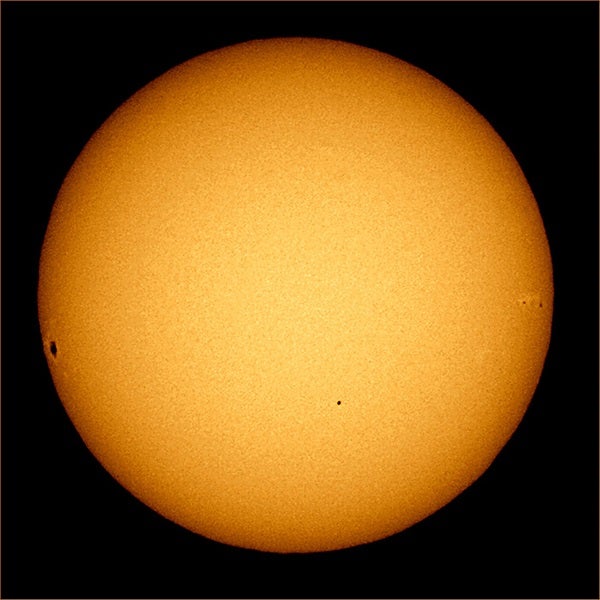
The temperature varies depending on which part you’re talking about. The core, where nuclear fusion occurs, is scorching hot, with a temperature of about 27 million degrees Fahrenheit (15 million degrees Celsius). The Sun’s surface, or photosphere, is cooler, at around 10,000 F (5,500 C). Meanwhile, the outer atmosphere, the corona, is curiously hotter than the surface, with temperatures soaring up to a few million degrees.
How old is the Sun?
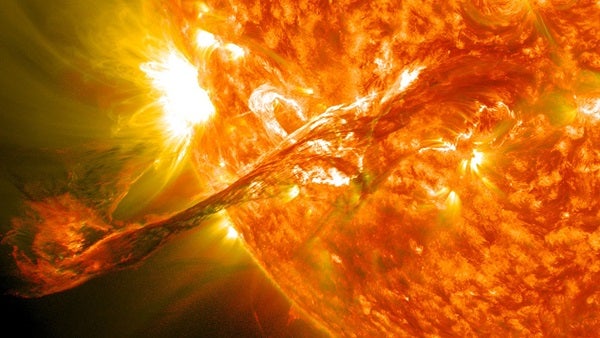
Our Sun is a middle-aged star, approximately 4.6 billion years old. It formed from the gravitational collapse of a region within a large molecular cloud primarily composed of hydrogen and helium. As the cloud contracted under its own gravity, the pressure and temperature at the core increased, eventually triggering nuclear fusion.
It has been burning ever since, and it’s expected to continue shining about the same way for another 5 billion years or so, at which point it will balloon up into a red giant star.
How big is the Sun?
With a diameter of some 864,000 miles (1.39 million km), the Sun dwarfs any other object in our solar system. In fact, you could fit about 1.3 million Earths inside it.
However, despite its dominance over our solar system, the Sun is still a relatively diminutive star when compared to others in the known universe. For instance, the red hypergiant star UY Scuti has a radius some 1,700 times that of the Sun, meaning some 5 billion Suns could fit inside UY Scuti.
What would happen if it suddenly disappeared?
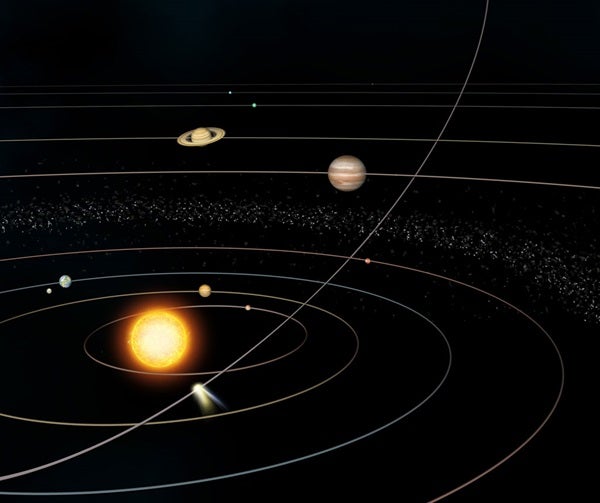
Without the Sun, Earth would be a vastly different place. We wouldn’t know the Sun had vanished for about eight minutes (the Earth is, on average, about 93 million miles away) due to the time it takes for light (and gravitational waves) to travel from it to Earth. After that, the world would plunge into darkness.
Without the Sun’s heat, Earth would become a frozen, lifeless rock within a week. The average global surface temperature would plummet, the atmosphere would freeze and fall to the ground as snow, and the oceans would freeze over. And without the Sun acting as the gravitational anchor point of the solar system, Earth would cease to orbit anything, instead moving along a straight line (depending on interactions with other planets) right out of our solar system.
What happens during a solar eclipse?

A solar eclipse occurs when the Moon moves between Earth and the Sun, casting the Moon’s small shadow on Earth. There are three types of solar eclipses: partial, annular, and total .
During a total solar eclipse, the Moon completely covers the Sun, casting a dark inner shadow, called a penumbra, that briefly turns day into night. On average, about 2.4 solar eclipses (of all types) occur somewhere on Earth each year. Total solar eclipses, however, are relatively rare, occurring somewhere on Earth only about once every 18 months, on average.
Fortunately, on April 8, 2024, a total solar eclipse will be visible across a narrow path that starts in Mexico and stretches from Texas to Maine and into eastern Canada. So prepare now, you don’t want to miss it!
How far away is it?
It depends on Earth’s average distance to the Sun is about 93 million miles (150 million kilometers) from the Sun.
How and when will it die?
In about 5 billion years, it will exhaust its hydrogen fuel and enter the red giant phase of its life. Its outer layers will expand, swallowing the inner planets, possibly including Earth. Eventually, the Sun will entirely shed its outer layers, leaving behind a hot core that will slowly cool and shrink into a white dwarf. Over billions more years, the white dwarf will continuously lose heat and ultimately fade from view – that is, assuming anyone is even around to watch.
Is it a normal star?
Yes, it is a relatively normal star: It’s known as a G-type main-sequence star, or G dwarf star, which are common throughout the universe. It just so happens that the Sun is the closest star to Earth. Like other stars, the Sun is a massive ball of hot, glowing gas called plasma. And as a main-sequence star, it shines by fusing hydrogen into helium in its core, releasing huge amounts of energy in the process.
One thing that makes our Sun somewhat uncommon is that it’s a single star. Many stars are part of binary systems or even larger groups. In a binary system, two stars orbit around a common center of mass. Such configurations are actually more common in the universe than single stars like the Sun.
The Sun is a dynamic and complex star that plays a critical role in our daily lives. It’s a massive, incredibly hot ball of gas that’s been burning bright for billions of years. And it will continue to burn for billions more. Without the Sun, life as we know it simply wouldn’t exist.
As our knowledge of the Sun and other stars continues to grow, so too will our appreciation for the beauty and bounty they bring to the worlds around. So, the next time you step outside and feel the warmth of the Sun on your skin, take a moment to marvel at the incredible power and mystery of our nearest star.

The Gravity of Math: How Geometry Rules the Universe
Venus likely has active volcanoes, flowing streams of lava.

2024 Full Moon calendar: Dates, times, types, and names
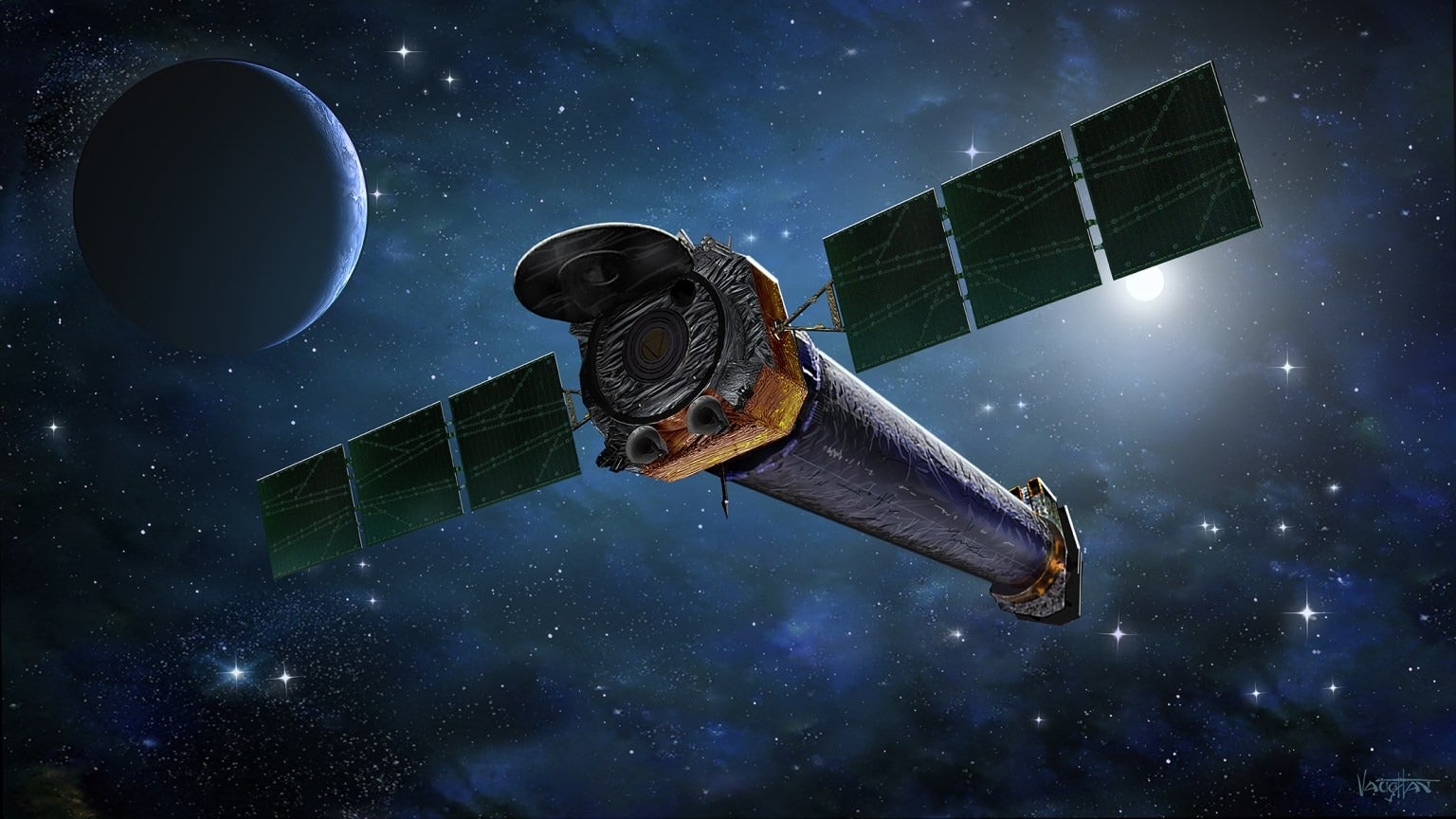
How Chandra’s clear, sharp photos help study supermassive black holes

Is Pluto a planet? It depends.

‘This planet should not be there.’ Second lightest exoplanet known to date surprises astronomers
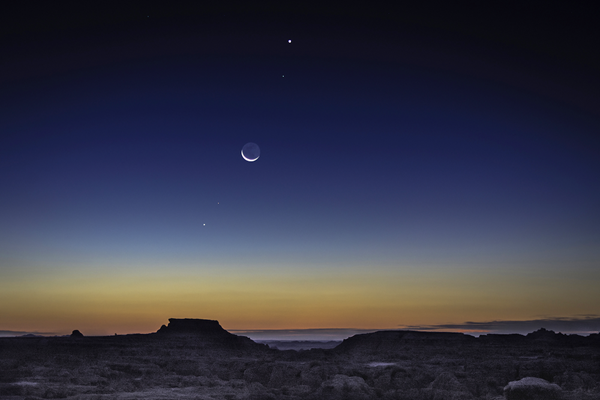
What it means for planets to align

Euclid’s new portraits of the dark universe are filled with detail, and wonder

Starmus VII hit all the right notes from beginning to end

Cosmic Distances
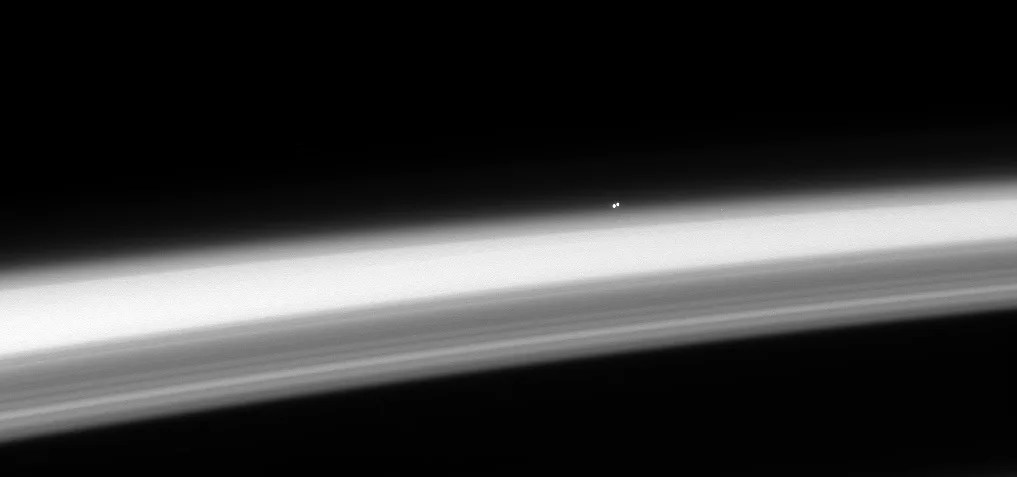
The space beyond Earth is so incredibly vast that units of measure which are convenient for us in our everyday lives can become GIGANTIC. Distances between the planets, and especially between the stars, can become so big when expressed in miles and kilometers that they're unwieldy. So for cosmic distances, we switch to whole other types of units: astronomical units, light years and parsecs.
Astronomical units, abbreviated AU, are a useful unit of measure within our solar system. One AU is the distance from the Sun to Earth's orbit, which is about 93 million miles (150 million kilometers). When measured in astronomical units, the 886,000,000-mile (1,400,000,000-kilometer) distance from the Sun to Saturn's orbit, is a much more manageable 9.5 AU. So astronomical units are a great way to compress truly astronomical numbers to a more manageable size.
Astronomical units also make it easy to think about distances between solar system objects. They make it easy to see that Jupiter orbits five times farther from the Sun than Earth, and that Saturn is twice as far from the Sun as Jupiter. (This is because, technically, you're expressing every distance as a ratio of the distance from Earth to the Sun. Convenient!)
For much greater distances — interstellar distances — astronomers use light years. A light year is the distance a photon of light travels in one year, which is about 6 trillion miles (9 trillion kilometers, or 63,000 AU). Put another way, a light year is how far you'd travel in a year if you could travel at the speed of light, which is 186,000 miles (300,000 kilometers) per second. (By the way, you can't travel at the speed of light, as far as we know, but that's a whole other story...) Like AU, light years make astronomical distances more manageable. For example, the nearest star system to ours is the triple star system of Alpha Centauri , at about 4.3 light years away. That's a more manageable number than 25 trillion miles, 40 trillion kilometers or 272,000 AU.
Light years also provide some helpful perspective on solar system distances: the Sun is about 8 light minutes from Earth. (And yes, there are also light seconds !) And because light from objects travels at light speed , when you see the Sun, or Jupiter or a distant star, you're seeing it as it was when the light left it, be that 8 minutes, tens of minutes or 4.3 years ago. And this is fundamental to the idea that when we're looking farther out into space, we're seeing farther back in time. (Think about it: you're seeing all the stars in the sky at different times in history — some a few years ago, others hundreds of years ago — all at the same time!)
Finally, parsecs. This is the unit used when the number of light years between objects climbs into the high thousands or millions. One parsec is 3.26 light years. The origin of this unit of measure is a little more complicated, but it's related to how astronomers measure widths in the sky. Astronomers use "megaparsecs" — a megaparsec is 1 million parsecs — for intergalactic distances, or the scale of distances between the galaxies.
And at the point when distances between galaxies become so epic that even megaparsecs get unwieldy, astronomers talk about distances in terms of how much a galaxy's light has been shifted toward longer, redder wavelengths by the expansion of the universe — a measure known as "redshift." Now that's astronomical.
Related Terms
- Learning Resources
- The Solar System
- The Universe
Explore More

What’s Up: June 2024 Skywatching Tips from NASA

The Moon and Amaey Shah

Travel Through Data From Space in New 3D Instagram Experiences
A new project provides special 3D “experiences” on Instagram using data from NASA’s Chandra X-ray Observatory and other telescopes through augmented reality (AR), allowing users to travel virtually through objects in space. These new experiences of astronomical objects – including the debris fields of exploded stars – are being released to help celebrate the 25th […]
Discover More Topics From NASA

Facts About Earth

Asteroids, Comets & Meteors

Kuiper Belt

Advertisement
How Close Can We Get to the Sun?
- Share Content on Facebook
- Share Content on LinkedIn
- Share Content on Flipboard
- Share Content on Reddit
- Share Content via Email
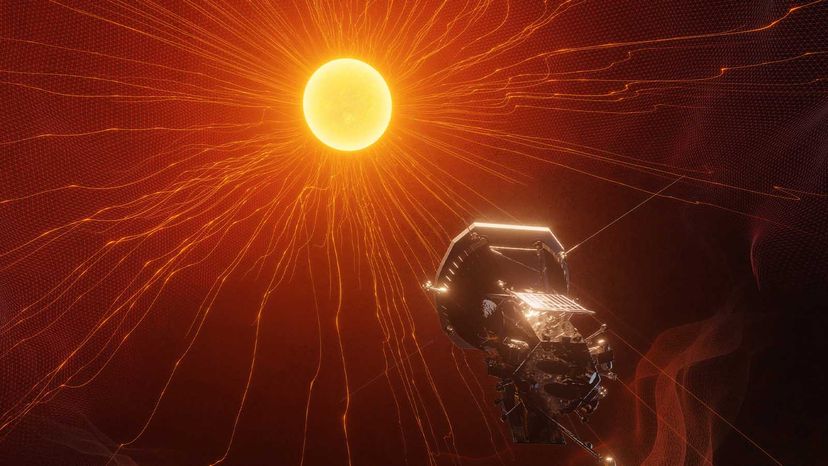
About 4 million miles (6.4 million kilometers) is quite a distance. It's the equivalent of driving around Earth's widest point, the equator, 160 times in a row.
Well that's about as close to the sun that NASA has gotten the Parker Solar Probe , so far anyway. The spacecraft, which launched Aug. 12, 2018, has set several major milestones since then, including becoming the first craft ever in history to touch the sun .
Such proximity to our massive star is completely unprecedented. NASA's Helios 2 probe came within 27 million miles (43.5 million kilometers) of the surface of the sun in 1976. That was closer than any other spacecraft at that point.
Ah, but records invite challengers. Earth and the sun are 93 million miles (150 million kilometers) apart. One NASA scientist said that if the two bodies stood on opposite ends of an American football field , the Parker Solar Probe's mission would bring it all the way to the sun's 4-yard line.
Solar exploration technology has come a long way. Yet engineers still need to keep a few limitations in mind — and it doesn't look like we'll be sending astronauts on a journey toward the sun anytime soon. So how did the Parker Solar Probe touch the sun and what is it up to next?
High Heat and the Corona Mystery
So much radiation, how it keeps its cool, dust in the (solar) wind.
Extreme heat is the most obvious concern. The sun's surface temperature is a stifling 10,340 degrees Fahrenheit (5,726 degrees Celsius). Curiously though, the area that surrounds the sun is even hotter.
You know that halo of light that creeps out from behind the moon during a solar eclipse ? That's the corona . A layer of blistering plasma, it represents the uppermost portion of the sun's atmosphere. The corona begins roughly 1,300 miles (2,100 kilometers) above the surface and extends far into space.
Parts of it get hot. Very hot. In some places, the corona is liable to be 300 times hotter than the surface. No one knows why this is; NASA hopes that the Parker Solar Probe will find some clues.
That's where the Parker Solar Probe passed through on its eighth flyby of the sun April 28, 2021. The spacecraft dipped to just 14.97 solar radii (6.4 million miles) from the sun's surface through an area in the corona known as a pseudostreamer . These are massive structures that rise from the sun like ribbons. You can see them during a solar eclipse. The first flyby lasted about four hours and the Parker Solar Probe got as close as 3.83 million miles from the sun's surface.
"Flying so close to the sun, Parker Solar Probe now senses conditions in the corona that we never could before," Nour Raouafi, the Parker Solar Probe project scientist at John Hopkins University Applied Physics Laboratory, said in a press statement . "We see evidence of being in the corona from magnetic field data, solar wind data and visually in white-light images. We can actually see the spacecraft flying through coronal structures that can be observed from Earth during a total solar eclipse."
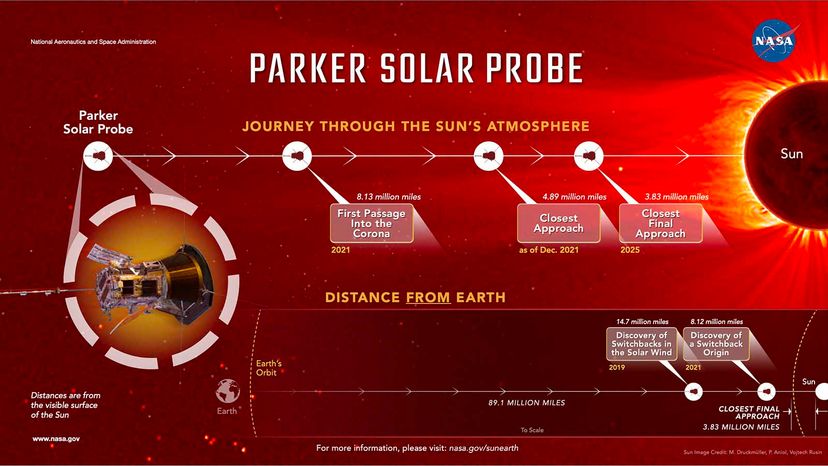
The sun emits a huge amount of radiation , including some forms that we perceive as visible light. Dangerous types of radiation intensify as you get closer to the sun. High radioactivity levels in deep space may be linked to cardiovascular problems. A 2016 survey found that astronauts who'd flown outside of low-Earth orbit were more likely to die of heart attacks or strokes than their peers who stayed closer to the home planet.
If you were sent adrift in nothing but an average NASA spacesuit, solar radiation would claim your life before you'd so much as reached the halfway point between Earth and the sun.
Clearly, you'd fare better inside a spaceship. NASA research scientist Eric Christian has said that it might someday be possible to design a vessel that could safely take human astronauts within 4 million miles (6.4 million kilometers) of the sun. But before we can even think about such a high-risk mission, we'll need to see how the Parker Solar Probe fares. So far, it's faring well.
To protect most of its data-collecting instruments, the Parker Solar Probe was fitted with a custom-made heat shield , consisting of two carbon-composite boards, an outer layer of reflective paint and a lightweight foam core. The shield looks more like a snail's shell than a turtle's: Instead of enveloping the entire probe, it sits on one side of it. When facing the sun, this "thermal protection system" safeguards the instruments behind it from heat radiation that's 475 times more powerful than anything Earth-orbiting satellites experience.
For the Parker Solar Probe to do its job, the thermal protection system continually faces the sun. Thrusters always orient the shields into the right position. Those thrusters need fuel, and eventually the spacecraft will run out of juice. The Parker Solar Probe was designed to orbit the sun at least 24 times. Feb. 25, 2022, was its 11th successful approach , and it put the spacecraft in Earth's view. Most of the passes occur when the sun is between the spacecraft and Earth leaving no direct line of sight. However, this 11th pass gave more than 40 observatories and a dozen spacecraft the opportunity to train their telescopes on the probe to gather valuable data.
Included in the data that will stream back to scientists through May 1, 2022, is a massive solar prominence that hit the probe directly in February 2022. It was the largest flare the Parker Solar Probe has witnessed since its launch.
"The shock from the event hit Parker Solar Probe head-on, but the spacecraft was built to withstand activity just like this — to get data in the most extreme conditions," project scientist Nour Raouafi said in a press statement . "And with the sun getting more and more active, we can't wait to see the data that Parker Solar Probe gathers as it gets closer and closer."
After its mission ends in 2025, there won't be enough fuel to keep the thrusters working much longer. Unprotected parts of the Parker Solar Probe will then shift toward the sun and disintegrate, transforming the probe into to space dust .
The Parker Solar Probe can trace its roots back to NASA's beginnings. On Oct. 24, 1958, less than three months after the administration was established, one of its committees made an ambitious proposal : Send a man-made probe beyond the planet Mercury to look at the sun up close.
Mercury is usually between 29 and 43 million miles (46 and 70 million kilometers) away from the sun. The Parker Solar Probe will go far inside the planet's orbit to gather information on solar wind . This phenomenon still is poorly understood but can destroy satellites and really screw up our GPS signals and radio communications here on Earth. If the probe can help us figure out a way to predict these winds, it could end up saving the world trillions of dollars . What can we say? Curiosity pays, and so does exploration.
Eugene Parker was the physicist who first proposed the existence of solar winds in the 1950s. The Parker Solar Probe was christened in his honor and was the first NASA spacecraft to be named after a living person . Parker passed away March 16, 2022, at the age of 94.
Frequently Asked Questions
What happens to the data collected by the parker solar probe after it disintegrates, how does the parker solar probe communicate its findings back to earth, especially from close distances to the sun.
Please copy/paste the following text to properly cite this HowStuffWorks.com article:


Ephemeris Calculator
Compute The Sun ephemerides for any date and time between 01 Jan 1600 and 31 Dec 2499 and display the predicted position in an interactive sky map.

Support this project! ✖
How far away is the sun from earth.
The distance of The Sun from Earth is currently 151,679,267 kilometers, equivalent to 1.013913 Astronomical Units . Light takes 8 minutes and 25.9476 seconds to travel from The Sun and arrive to us.
- The Sun Information on TheSkyLive.com
- Where is The Sun?
- How far is The Sun from Earth?
- When does The Sun rise and set?
- How bright is The Sun?
- Interactive sky map
- Live position tracker
The Planets
How Long Would It Take To Get To The Sun?
The first question you need to ask, is why would you want to go to the Sun? Surprisingly there are quite a few reasons. Not in person of course, but sending craft that can record first hand data and observe this ball of life giving light up close could provide answers to many burning questions.

As craft accelerate as they approach the Sun, determining how long would it take to get to the sun, may not be as straightforward as you would expect. And by ‘get there’ where exactly do we mean? We can’t land on the Sun, there is no solid surface and atmospheric temperatures are extreme. So are there any missions planned? and if so, what is the expected flight time and orbital destination? Let’s take a look.
The Sun – Quick Facts
- Age: 4.6 Billion Years
- Type: Yellow Dwarf (G2V)
- Mass: 1,989,100,000,000,000,000, 000 billion kg (333,060 x Earth)
- Diameter: 1,392,684 km (109 x Earth)
- Circumference at the Equator: 4,370,005.6 km
- Surface Temperature: 5,500 °C
- Internal Temperature: 15 million °C
- Composition: 72% Hydrogen, 26% Helium
- Energy output: Solar Radiation
- Rotation: 27 days
- Revolution: 225 to 250 million years
- Sunlight Travel Time: 8 minutes to reach Earth
- Apparent Magnitude: −26.74
- Average Distance To Earth: 150 million km (93 million miles)
- Closest Distance to Earth: – Appx 147.1 million km ( 0.983 AU )
- Furthest distance to Earth: – Appx 152.1 million km ( 1.017 AU )
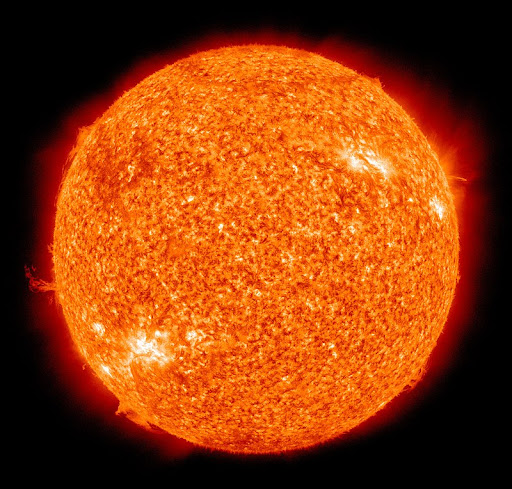
How far is Earth from the Sun?
At its closest ( perihelion ), the Sun is around 91.4 million miles (147.1 million km) away from the Earth . This occurs annually between 3 – 6th of July, a few weeks after the summer solstice. At its farthest ( aphelion ), the Sun is around 94.5 million miles (152.1 million km) away from the Earth. This happens in the northern winter, between the 2 – 4th of January annually. These seasonal differences occur due to elliptical orbit that the Earth has around our star. The Earth, however, is moving away from the Sun very slowly, at about 15cm a year!
How Long Would it Take to Get to the Sun?
There are many missions that have been launched to explore and examine the Sun, but most of these do so from an Earth orbit, or one of the Earth-Sun Lagrange Points rather than a solar orbit. There are however, a few that have been sent to orbit and explore the Sun directly. The closest we have been able to get to our star is with the latest Parker Solar Probe, which in December 2021 ‘touched’ the Sun’s corona.
The varying missions all had different objectives and observed from different distances. Some were flybys and some more complex. So in terms of how long it would take to get there, using existing or previous missions as an example, the time depends greatly on mission objective and type.
That aside, there are a few things that need to be taken into account when calculating a visit to our star. Objects get quicker as they approach the Sun. So if you plan on slowing down when you get there a planetary assist or two is critical to help decelerate to a useful speed.
What is the Shortest Trip?
The shortest trip to the sun by any craft so far, is also the latest mission to have been sent to our star. The Parker Solar Probe, is the fasted spacecraft we have launched so far. It was launched on August 12th, 2018 and just over two months later on October 29, 2018 it became the closest object ever sent to the Sun. The Parker Solar Probe has still to achieve its closest pass of the Star. It has conducted many gravity assists using Venus to reduce it’s trajectory. Each time bringing the probe closer to the Sun.
How Often Does The Closest Approach Occur?
The Earth’s orbit is around the Sun, and it completes a full orbit every year. The closest approach ( perihelion ) therefore happens on a predicable annual schedule, between January 2 – 4 each year.
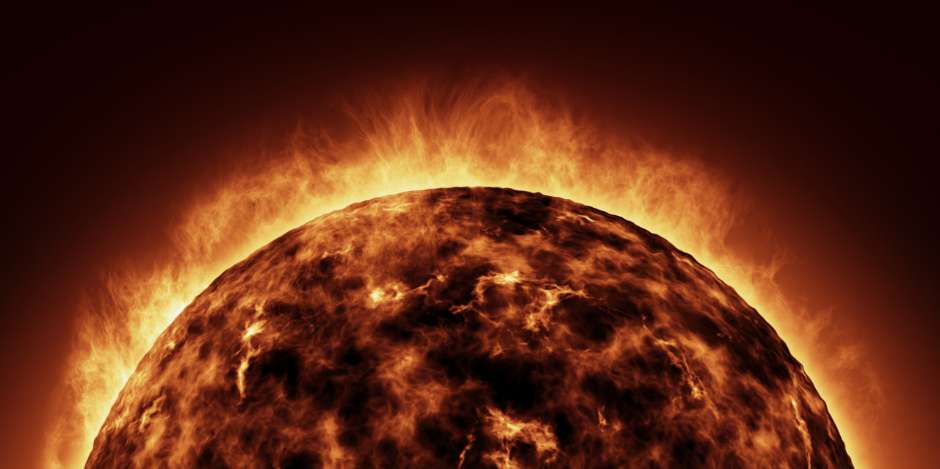
Missions To the Sun
Many space probes have been sent to study our only star. The Sun does not have a solid surface so we cannot send missions for landing. It is also very hot which makes it a great challenge to have a close-up peek into this big burning fireball.
Still, that does not limit us from exploring from afar. And with the advancements made over the years, NASA’s Parker Solar Probe has even gone as close to “touching” the Sun’s surface.
Many Sun-watching spacecraft are still operational. Examples are the Solar Orbiter, Advanced Composition Explorer (ACE), Interface Region Imaging Spectrograph (IRIS), the Wind Spacecraft, Solar Terrestrial Relations Observatory (STEREO), the Hinode Satellite, and the Solar Dynamics Observatory. Most craft study the Sun from an orbit around the Earth, or one of the Earth-Sun Lagrange points.
Below are some other missions sent to learn more about the Sun.
The Pioneer 5 orbiter was launched in 1960 to study the interplanetary space between Venus and Earth. It was supposed to head to Venus but it changed route and entered the solar orbit instead.
During its 3-month course, it was able to obtain useful information about solar flares and the magnetic field phenomena.
In October 1990, NASA partnered with ESA (European Space Agency) to launch the Ulysses spacecraft. It was a highly successful mission that lasted for nearly 19 years. It studied the solar wind and the Sun’s magnetic field, among others.
Ulysses was the first spacecraft to study the Sun from above and below its poles. It had a couple of mission extensions throughout its course where it also encountered three comet tails.
Parker Solar Probe
The Parker Solar Probe has been the closest we have ever been to the Sun yet. Flying at a speed of around 700,000 kph (430,000 mph), it has reached the Sun’s corona in December 2021. This is a great first which means that a man-made spacecraft has finally “touched” the Sun.
The probe sent valuable data and images as it entered the Sun’s outer atmosphere. It was bombarded by jets of plasma as it entered the corona. Among its many findings are about the “switchback” of solar winds and magnetic field changes around the coronal area
On an average jet plane, flying at 550 miles per hour, it would take 19.29 years, or 7,045 days to travel the 93 million miles to the Sun.
At an average distance of 93 million miles from Earth, if you were to drive there at 60 MPH it would take approximately 63,588 days, or 176.8 years!
At an average constant stride of 3 MPH, it would take approximately 31,000,000 hours, 1,291,667 days, or 3,536 years to reach the Sun!
Link/cite this page
If you use any of the content on this page in your own work, please use the code below to cite this page as the source of the content.
<a href="https://theplanets.org/how-long-would-it-take-to-get-to-the-sun/">How Long Would It Take To Get To The Sun?</a>
Stewart, Suzy. "How Long Would It Take To Get To The Sun?". The Planets . Accessed on May 31, 2024. https://theplanets.org/how-long-would-it-take-to-get-to-the-sun/.
Stewart, Suzy. "How Long Would It Take To Get To The Sun?". The Planets , https://theplanets.org/how-long-would-it-take-to-get-to-the-sun/. Accessed 31 May, 2024.
Ask a Scientist: How you can calculate how long it would take to travel to the sun
QUESTION: If you were flying to the sun at 100 miles per hour, how many years would it take you to get to the sun?
ANSWER: Hi Brielle, thank you for your question! In your question, you give us a speed (100 miles per hour). Even though speed is often thought of and talked about as a number, if you look more closely, you can see that speed is a relationship. Some people call this relationship a "ratio," and some people call it a "rate."
No matter what you call it, it tells us how one thing (distance) relates to another thing (time). In math, the relationship would be s = d/t, where "s" stands for speed, "d" stands for distance, the forward slash stands for a fraction bar or means “divided by,” and "t" stands for time. If you think that this relationship would make a funny kind of fraction, that is because a fraction is also a relationship!
More Ask a Scientist: Making potions today is chemistry, not magic
More Ask a Scientist: Yes, cats really do always land on their feet
More: A 'threepeat': How one family raised three high school valedictorians
Notice that, in your question, you gave us the "s," the speed. The speed is 100 miles per hour, or 100 mph for short. Also, notice that what you want to know, “How many years,” is time. You want to know how much time it takes to travel a certain distance (the distance to the sun) given a speed of 100 mph. So, what we want to calculate is "t." In order to calculate time, we need to know how far or the distance this person is traveling. This means we need to know the person’s starting point.
Let’s assume this person is starting from Earth. So, we need to know the distance that the sun is from Earth. The sun is on average approximately 93 million miles away from Earth. We have to say “average” because remember that the Earth revolves around the sun, and the path it takes around the sun is not an exact circle. So, sometimes the Earth is closer than 93 million miles. and sometimes it is farther away.
Now that we know the distance, we can use the relationship we talked about above, and a little bit of algebra to calculate the answer to be 930,000 hours. But you asked for years, so we would need to convert hours to years (this part you probably already know how to do). Since there are 24 hours in a day, divide 930,000 by 24 hours to get the number of days. And then, there are 365 days in a year, so divide the number of days by 365 to get the number of years. When I did this calculation, I got 106 plus a remainder.
So, if someone was traveling 100 miles per hour from earth to the sun, it would take just over 106 years.
Meet the student
Name: Brielle Berdine.
Grade: Fifth.
School: Maine Memorial, Maine-Endwell Central School District.
Teacher: Mr. Pufky.
Hobbies: Reading, playing soccer and playing video games.
Career interests: Veterinarian.
Meet the scientist
Answered by: Angela Dosalmas.
Title: Postdoctoral Scholar. STEM education researcher, Binghamton University.
Research area: Mathematics.
Interests/hobbies: I like to play any and every sport, especially football, soccer and baseball/softball. I love traveling, especially following sports teams. I love construction and building, especially home remodels, and I love coding, reading and watching movies and live theater.
Questions are answered by science experts at Binghamton University. Teachers in the Greater Binghamton area who wish to participate in the program are asked to write to Ask a Scientist, c/o Binghamton University, Office of Communications and Marketing, PO Box 6000, Binghamton, NY 13902-6000, or e-mail [email protected] . For more information, visit binghamton.edu/mpr/ask-a-scientist/ .
Support our journalism and become a digital subscriber today. Click here for our special offers.
share this!
April 15, 2013
How long does it take sunlight to reach the Earth?
by Fraser Cain, Universe Today
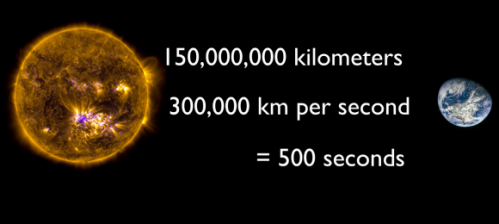
Here's a question… how long does it take sunlight to reach Earth? This sounds like a strange question, but think about it. Sunlight travels at the speed of light. Photons emitted from the surface of the Sun need to travel across the vacuum of space to reach our eyes.
The short answer is that it takes sunlight an average of 8 minutes and 20 seconds to travel from the Sun to the Earth.
If the Sun suddenly disappeared from the Universe (not that this could actually happen, don't panic), it would take a little more than 8 minutes before you realized it was time to put on a sweater.
Here's the math. We orbit the Sun at a distance of about 150 million km. Light moves at 300,000 kilometers/second. Divide these and you get 500 seconds, or 8 minutes and 20 seconds.
This is an average number. Remember, the Earth follows an elliptical orbit around the Sun, ranging from 147 million to 152 million km. At its closest point, sunlight only takes 490 seconds to reach Earth. And then at the most distant point, it takes 507 seconds for sunlight to make the journey.
But the story of light gets even more interesting, when you think about the journey light needs to make inside the Sun.
You probably know that photons are created by fusion reactions inside the Sun's core. They start off as gamma radiation and then are emitted and absorbed countless times in the Sun's radiative zone, wandering around inside the massive star before they finally reach the surface .
What you probably don't know, is that these photons striking your eyeballs were ACTUALLY created tens of thousands of years ago and it took that long for them to be emitted by the sun.
Once they escaped the surface, it was only a short 8 minutes for those photons to cross the vast distance from the Sun to the Earth
As you look outward into space, you're actually looking backwards in time.
The light you see from your computer is nanoseconds old. The light reflected from the surface of the Moon takes only a second to reach Earth. The Sun is more than 8 light-minutes away. And so, if the light from the nearest star (Alpha Centauri) takes more than 4 years to reach us, we're seeing that star 4 years in the past.
There are galaxies millions of light-years away, which means the light we're seeing left the surface of those stars millions of years ago. For example, the galaxy M109 is located about 83.5 million light-years away.
If aliens lived in those galaxies, and had strong enough telescopes, they would see the Earth as it looked in the past. They might even see dinosaurs walking on the surface.
Source: Universe Today
Explore further
Feedback to editors

Trout in mine-polluted rivers are genetically 'isolated,' new study shows
8 hours ago

Novel mobile air monitoring technology yields greater insight into post-disaster pollution levels
9 hours ago

New genomic tools for three modern cotton varieties could guide future breeding efforts
10 hours ago

Accelerated approach leads to discovery of a new catalytic promoter on par with decades of study

Controlling ion transport for a blue energy future: Research highlights the potential of nanopore membranes

Tsunami sands help scientists assess Cascadia earthquake models
11 hours ago

Tracing the evolution of ferns' surprisingly sweet defense strategy
12 hours ago

Novel method for mass production of recombinant proteins uses mono-sodium glutamate

The missing puzzle piece: A striking new snake species from the Arabian Peninsula

Microscopic defects in ice influence how massive glaciers flow, study shows
Relevant physicsforums posts, some photos of the moon.
5 hours ago
Will we ever communicate with extraterrestial life in a reasonable time frame?
13 hours ago
Retro/prograde flyby galaxies and their bar formation
17 hours ago
Are some objects in the night sky just older images of other objects?
May 30, 2024
Solar Activity and Space Weather Update thread
May 29, 2024
Questions about dark matter/energy
May 28, 2024
More from Astronomy and Astrophysics
Related Stories

SDO's crazy-looking Sun due to syzygy
Apr 4, 2011

Earth's orbit creates more than a leap year
Feb 8, 2008

Sun emit a mid-level flare
Nov 13, 2012

A cool discovery about the Sun's next-door twin
Feb 20, 2013

Fear no supernova
Dec 16, 2011

Prepare for a total solar eclipse
Recommended for you.

ISS research shows spaceflight affects tumor-bearing fruit fly hosts and their parasites

New technique offers more precise maps of the moon's surface

Mystery of 'slow' solar wind unveiled by Solar Orbiter mission

NASA's Psyche fires up its sci-fi-worthy thrusters
May 22, 2024

Blue Origin flies thrill seekers to space, including oldest astronaut
May 19, 2024

Robotic 'superlimbs' could help moonwalkers recover from falls
May 15, 2024
Let us know if there is a problem with our content
Use this form if you have come across a typo, inaccuracy or would like to send an edit request for the content on this page. For general inquiries, please use our contact form . For general feedback, use the public comments section below (please adhere to guidelines ).
Please select the most appropriate category to facilitate processing of your request
Thank you for taking time to provide your feedback to the editors.
Your feedback is important to us. However, we do not guarantee individual replies due to the high volume of messages.
E-mail the story
Your email address is used only to let the recipient know who sent the email. Neither your address nor the recipient's address will be used for any other purpose. The information you enter will appear in your e-mail message and is not retained by Phys.org in any form.
Newsletter sign up
Get weekly and/or daily updates delivered to your inbox. You can unsubscribe at any time and we'll never share your details to third parties.
More information Privacy policy
Donate and enjoy an ad-free experience
We keep our content available to everyone. Consider supporting Science X's mission by getting a premium account.
E-mail newsletter
Astronomical Unit: How far away is the sun?
Earth's distance from the sun does not stay the same throughout the year.
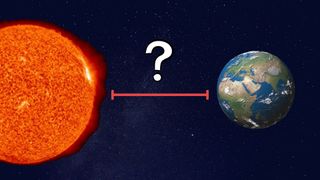
Difference between AU, light-year and parsec
Astronomical unit faqs.
- New definition
Our solar system in astronomical units
History of the astronomical unit, astronomical unit questions answered by an expert.
An astronomical unit (AU) is exactly 149,597,870,700 meters (92,955,807 miles or 149,597,871 kilometers), according to the International Astronomical Union (IAU). This is roughly the average distance between Earth and the sun.
Astronomers use astronomical units to describe how far away objects in space are, mostly in relation to the sun or other stars. For instance, Jupiter is about 5.2 AU from the sun, according to NASA .
Because Earth's orbit around the sun is elliptical (oval-shaped), it isn't always the same distance from the sun. An astronomical unit represents a practical average, rather than a precise measurement, of our distance from the sun.
Related: How big is Earth?

Astronomical units are different from some other units of measurement researchers use to describe the distances of objects in space. Another unit is the light-year , or the distance light travels in one year — around 5.88 trillion miles ( 9.46 trillion km), according to NASA. In contrast, 1 AU is about 8.3 light-minutes, meaning it takes light about 8.3 minutes to travel from the sun to Earth.
Another unit is the parsec, which is equal to about 3.26 light-years, according to NASA. The parsec is a more technical measurement that is derived from an astronomical unit and is used mainly by scientists.
Technically, a parsec is defined as the distance at which 1 AU subtends a one-arcsecond angle (see diagram to the right). The next-nearest star to the sun, Proxima Centauri, is about 1.3 parsecs, 4.25 light-years or 268,770 AU away .
What is the length of one astronomical unit?
One astronomical unit is exactly 149,597,870,700 meters (92,955,807 miles or 149,597,871 km), as defined by the International Astronomical Union.
What are examples of astronomical units?
Earth, by definition, is 1 AU from the sun. Mercury, the closest planet to the sun, is about 0.39 AU from our star, while Neptune, the farthest planet from the sun, is 30.06 AU away from it.
What's the difference between an astronomical unit and a parsec?
An astronomical unit is the distance between Earth and the sun and measures distances on the scale of star systems. A parsec is a unit used to measure vast distances in interstellar space, such as distances between stars and galaxies, and is partially defined using an AU. One parsec is about 19 trillion miles (31 trillion km). It takes light 8.3 minutes to travel between Earth and the sun but 3.26 years to travel one parsec.
Changes to the definition
Before 2012, the definition of an astronomical unit was not defined as a constant and depended on several factors. The IAU, the international group that defines astronomical constants, decided to make the measurement simpler in August of that year.
Why the change? One reason was that the previous method of calculating an AU depended on knowing the mass of the sun , but that measurement is always changing as the sun converts its mass into energy, Nature reported . Another is related to Einstein's theory of general relativity , which posits that space-time is relative to the observer's location. The current definition addresses this problem by basing the distance on the speed of light in a vacuum, which always remains constant.
All of the bodies in the solar system — including the planets, asteroids and comets — orbit the sun at various distances. Like Earth, other planets have elliptical orbits and are not always the same distance from the sun. This is especially true for dwarf planets such as Pluto , which have highly irregular orbits. At its closest, Pluto is about 29.7 AU from the sun (closer than Neptune ); at its farthest, it is about 49.3 AU away, according to NASA.
The solar system extends for thousands of astronomical units away from the sun. Mercury , the closest planet to the sun, gets as near as 29 million miles (47 million km) in its elliptical orbit, while some objects in the Oort cloud , the solar system's icy shell, are thought to lie as far as 100,000 AU to 200,000 AU from the sun.
Source: NASA Jet Propulsion Laboratory (see planets data and dwarf planet Pluto data )

The first known person to measure the distance to the sun was Greek astronomer Aristarchus of Samos , who lived from about 310 B.C. to 230 B.C. He used the phases of the moon to measure the sizes and distances of the sun and moon.
He postulated that when the half moon appears in Earth's sky, the center of our planet and the center of the moon create a line in space that forms a 90-degree angle with another line that could be drawn through space from the moon's center all the way to the sun's center. Using trigonometry, Aristarchus determined the hypotenuse of a triangle based on those two imaginary lines . The value of the hypotenuse provided the distance between the sun and Earth.
Although his measurement was imprecise, Aristarchus provided a simple understanding of the sizes and distances of the three bodies, which led him to conclude that Earth goes around the sun about 1,700 years before Nicolaus Copernicus proposed his heliocentric model of the solar system.
In 1653, astronomer Christiaan Huygens calculated the distance from Earth to the sun. Much like Aristarchus, he used the phases of Venus to find the angles in a Venus-Earth-sun triangle. His more precise measurements for what exactly constitutes an AU were possible thanks to the existence of the telescope.
Guessing (correctly, by chance) the size of Venus, Huygens was able to determine the distance from Venus to Earth. Knowing that distance, plus the angles made by the triangle, he measured the distance from Earth to the sun. However, because Huygens' method was partly guesswork and not completely scientifically grounded, he usually doesn't get the credit.
In 1672, Giovanni Cassini used a method involving parallax , or angular difference, to find the distance to Mars and, at the same time, figured out the distance to the sun. He sent a colleague, Jean Richer, to Cayenne, French Guiana (located just northwest of the modern-day Guiana Space Center, near Kourou) while he stayed in Paris. At the same time, they both took measurements of the position of Mars relative to background stars, and triangulated those measurements with the known distance between Paris and French Guiana. Once they had the distance to Mars, they could also calculate the distance from Earth to the sun. Because his methods were more scientific, Cassini usually gets the credit.
These techniques are also why astronomers continue to use the distance from Earth to the sun as a scale for interpreting the solar system.
"Expressing distances in the astronomical unit allowed astronomers to overcome the difficulty of measuring distances in some physical unit," Nicole Capitaine, an astronomer at the Paris Observatory, told Space.com in 2012. "Such a practice was useful for many years, because astronomers were not able to make distance measurements in the solar system as precisely as they could measure angles."
The sun is at the heart of the solar system. All of the bodies in the solar system — planets, asteroids, comets, etc. — revolve around it at various distances.
Mercury, the planet closest to the sun, gets as close as 29 million miles (47 million km) in its elliptical orbit, while objects in the Oort Cloud, the solar system's icy shell, are thought to lie as far as 9.3 trillion miles (15 trillion km).
Everything else falls in between. Jupiter , for example, is 5.2 AU from the sun. Neptune is 30.07 AU from the sun.
The distance to the nearest star, Proxima Centauri, is about 268,770 AU, according to NASA . However, to measure longer distances, astronomers use light-years, or the distance that light travels in a single Earth-year, which is equal to 63,239 AU. So Proxima Centauri is about 4.25 light-years away.
Adam Riess is an astrophysicist who studies physical cosmology, measuring the universe using distance indicators such as supernovas (exploding stars) and Cepheids (pulsating stars). He also studies the expansion of the universe and was co-awarded the Nobel Prize in physics in 2011 for his role in discovering that the expansion rate of the universe is accelerating.
What sort of astronomical objects are still usually measured in AU, and when might objects be too far away for the measurement to make sense?
The AU remains the baseline for any trigonometric parallax measurements, so nearly all distances measured in the Milky Way (MW), such as from the ESA [European Space Agency] Gaia mission , are calibrated to the AU. Outside the MW, distances based on standard candles like Cepheids are also calibrated by parallax so also depend on the AU.
Geometry was a key part of how early astronomers calculated distances in space. Is it still, and how is it used?
Yes, geometry underlies all distance measurements. We just plug the physics into the geometry
How can you use objects like supernovas and Cepheids to determine distances and other astronomical phenomena?
By calibrating their luminosity, we can use their brightness and the inverse square law to determine their distances.
Additional resources
Watch a video explaining Aristarchus' approach to calculating the distance from Earth to the sun. NASA's sun fact sheet provides basic statistics about our star and its solar system exploration page offers details about solar science and missions studying the sun.
Bibliography
Brumfiel, G. "The astronomical unit gets fixed." Nature (2012). https://www.nature.com/articles/nature.2012.11416
International Astronomical Union, "Measuring the Universe," accessed Jan. 21, 2022. https://www.iau.org/public/themes/measuring/
Kish, G. "A Source Book in Geography," accessed via Google Books. Harvard University Press, 1978.
Luque, B. and Ballesteros, F. "To the Sun and beyond." Nature Physics (2019). https://www.nature.com/articles/s41567-019-0685-3
NASA Jet Propulsion Laboratory, “Solar System Sizes and Distances,” accessed Oct. 19, 2023. https://www.jpl.nasa.gov/edu/pdfs/scaless_reference.pdf
NASA Exoplanet Exploration, “What is a light-year?” accessed Oct. 19, 2023. https://exoplanets.nasa.gov/faq/26/what-is-a-light-year/
NASA Science, “Cosmic Distances,” accessed Oct. 19, 2023. https://science.nasa.gov/solar-system/cosmic-distances/
NASA Goddard Space Flight Center, “The Nearest Neighborhood Star,” accessed Oct. 19, 2023. https://imagine.gsfc.nasa.gov/features/cosmic/nearest_star_info.html
NASA Jet Propulsion Laboratory. “Planet Distance Chart,” accessed Oct. 19, 2023. https://www.jpl.nasa.gov/edu/pdfs/ssbeads_answerkey.pdf
Physics Explained. “Greek Physics: Calculating the distance to the Sun and Moon,” accessed Oct. 19, 2023. https://www.youtube.com/watch?v=urgYWNCN-RA&t=137s
Join our Space Forums to keep talking space on the latest missions, night sky and more! And if you have a news tip, correction or comment, let us know at: [email protected].
Get the Space.com Newsletter
Breaking space news, the latest updates on rocket launches, skywatching events and more!
Rebecca Sohn is a freelance science writer. She writes about a variety of science, health and environmental topics, and is particularly interested in how science impacts people's lives. She has been an intern at CalMatters and STAT, as well as a science fellow at Mashable. Rebecca, a native of the Boston area, studied English literature and minored in music at Skidmore College in Upstate New York and later studied science journalism at New York University.
Science and music festival Starmus VII is about to rock Bratislava with a stellar lineup
China's Chang'e 6 mission to collect samples of the far side of the moon enters lunar orbit (video)
Bejeweled galaxy sparkles in new Hubble photo
Most Popular
- 2 Is it time to put a dimmer on the push for space solar power?
- 3 Robotic Russian cargo ship leaves the ISS, burns up in Earth's atmosphere (photo)
- 4 How scientists shipped astronomy's largest camera from California to Chile
- 5 Volcanoes on Venus might be erupting right now
The Sun is a 4.5 billion-year-old yellow dwarf star – a hot glowing ball of hydrogen and helium – at the center of our solar system. It’s about 93 million miles (150 million kilometers) from Earth and it’s our solar system’s only star. Without the Sun’s energy, life as we know it could not exist on our home planet.
From our vantage point on Earth, the Sun may appear like an unchanging source of light and heat in the sky. But the Sun is a dynamic star, constantly changing and sending energy out into space. The science of studying the Sun and its influence throughout the solar system is called heliophysics.
The Sun is the largest object in our solar system. Its diameter is about 865,000 miles (1.4 million kilometers). Its gravity holds the solar system together, keeping everything from the biggest planets to the smallest bits of debris in orbit around it.
Even though the Sun is the center of our solar system and essential to our survival, it’s only an average star in terms of its size. Stars up to 100 times larger have been found. And many solar systems have more than one star. By studying our Sun, scientists can better understand the workings of distant stars.
The hottest part of the Sun is its core, where temperatures top 27 million °F (15 million °C). The part of the Sun we call its surface – the photosphere – is a relatively cool 10,000 °F (5,500 °C). In one of the Sun’s biggest mysteries, the Sun’s outer atmosphere, the corona, gets hotter the farther it stretches from the surface. The corona reaches up to 3.5 million °F (2 million °C) – much, much hotter than the photosphere.
The Sun has been called by many names. The Latin word for Sun is “sol,” which is the main adjective for all things Sun-related: solar. Helios, the Sun god in ancient Greek mythology, lends his name to many Sun-related terms as well, such as heliosphere and helioseismology.
Potential for Life
The Sun could not harbor life as we know it because of its extreme temperatures and radiation. Yet life on Earth is only possible because of the Sun’s light and energy.
Size and Distance
Our Sun is a medium-sized star with a radius of about 435,000 miles (700,000 kilometers). Many stars are much larger – but the Sun is far more massive than our home planet: it would take more than 330,000 Earths to match the mass of the Sun, and it would take 1.3 million Earths to fill the Sun's volume.
The Sun is about 93 million miles (150 million kilometers) from Earth. Its nearest stellar neighbor is the Alpha Centauri triple star system: red dwarf star Proxima Centauri is 4.24 light-years away, and Alpha Centauri A and B – two sunlike stars orbiting each other – are 4.37 light-years away. A light-year is the distance light travels in one year, which equals about 6 trillion miles (9.5 trillion kilometers).
Orbit and Rotation
The Sun is located in the Milky Way galaxy in a spiral arm called the Orion Spur that extends outward from the Sagittarius arm.
The Sun orbits the center of the Milky Way, bringing with it the planets, asteroids, comets, and other objects in our solar system. Our solar system is moving with an average velocity of 450,000 miles per hour (720,000 kilometers per hour). But even at this speed, it takes about 230 million years for the Sun to make one complete trip around the Milky Way.
The Sun rotates on its axis as it revolves around the galaxy. Its spin has a tilt of 7.25 degrees with respect to the plane of the planets’ orbits. Since the Sun is not solid, different parts rotate at different rates. At the equator, the Sun spins around once about every 25 Earth days, but at its poles, the Sun rotates once on its axis every 36 Earth days.
As a star, the Sun doesn’t have any moons, but the planets and their moons orbit the Sun.
The Sun would have been surrounded by a disk of gas and dust early in its history when the solar system was first forming, about 4.6 billion years ago. Some of that dust is still around today, in several dust rings that circle the Sun. They trace the orbits of planets, whose gravity tugs dust into place around the Sun.
The Sun formed about 4.6 billion years ago in a giant, spinning cloud of gas and dust called the solar nebula. As the nebula collapsed under its own gravity, it spun faster and flattened into a disk. Most of the nebula's material was pulled toward the center to form our Sun, which accounts for 99.8% of our solar system’s mass. Much of the remaining material formed the planets and other objects that now orbit the Sun. (The rest of the leftover gas and dust was blown away by the young Sun's early solar wind.)
Like all stars, our Sun will eventually run out of energy. When it starts to die, the Sun will expand into a red giant star, becoming so large that it will engulf Mercury and Venus, and possibly Earth as well. Scientists predict the Sun is a little less than halfway through its lifetime and will last another 5 billion years or so before it becomes a white dwarf.
The Sun is a huge ball of hydrogen and helium held together by its own gravity.
The Sun has several regions. The interior regions include the core, the radiative zone, and the convection zone. Moving outward – the visible surface or photosphere is next, then the chromosphere, followed by the transition zone, and then the corona – the Sun’s expansive outer atmosphere.
Once material leaves the corona at supersonic speeds, it becomes the solar wind, which forms a huge magnetic "bubble" around the Sun, called the heliosphere. The heliosphere extends beyond the orbit of the planets in our solar system. Thus, Earth exists inside the Sun’s atmosphere. Outside the heliosphere is interstellar space.
The core is the hottest part of the Sun. Nuclear reactions here – where hydrogen is fused to form helium – power the Sun’s heat and light. Temperatures top 27 million °F (15 million °C) and it’s about 86,000 miles (138,000 kilometers) thick. The density of the Sun’s core is about 150 grams per cubic centimeter (g/cm³). That is approximately 8 times the density of gold (19.3 g/cm³) or 13 times the density of lead (11.3 g/cm³).
Energy from the core is carried outward by radiation. This radiation bounces around the radiative zone, taking about 170,000 years to get from the core to the top of the convection zone. Moving outward, in the convection zone, the temperature drops below 3.5 million °F (2 million °C). Here, large bubbles of hot plasma (a soup of ionized atoms) move upward toward the photosphere, which is the layer we think of as the Sun's surface.
The Sun doesn’t have a solid surface like Earth and the other rocky planets and moons. The part of the Sun commonly called its surface is the photosphere. The word photosphere means "light sphere" – which is apt because this is the layer that emits the most visible light. It’s what we see from Earth with our eyes. (Hopefully, it goes without saying – but never look directly at the Sun without protecting your eyes.)
Although we call it the surface, the photosphere is actually the first layer of the solar atmosphere. It's about 250 miles thick, with temperatures reaching about 10,000 degrees Fahrenheit (5,500 degrees Celsius). That's much cooler than the blazing core, but it's still hot enough to make carbon – like diamonds and graphite – not just melt, but boil. Most of the Sun's radiation escapes outward from the photosphere into space.
Above the photosphere is the chromosphere, the transition zone, and the corona. Not all scientists refer to the transition zone as its own region – it is simply the thin layer where the chromosphere rapidly heats and becomes the corona. The photosphere, chromosphere, and corona are all part of the Sun’s atmosphere. (The corona is sometimes casually referred to as “the Sun’s atmosphere,” but it is actually the Sun’s upper atmosphere.)
The Sun’s atmosphere is where we see features such as sunspots, coronal holes, and solar flares.
Visible light from these top regions of the Sun is usually too weak to be seen against the brighter photosphere, but during total solar eclipses, when the Moon covers the photosphere, the chromosphere looks like a fine, red rim around the Sun, while the corona forms a beautiful white crown ("corona" means crown in Latin and Spanish) with plasma streamers narrowing outward, forming shapes that look like flower petals.
In one of the Sun’s biggest mysteries, the corona is much hotter than the layers immediately below it. (Imagine walking away from a bonfire only to get warmer.) The source of coronal heating is a major unsolved puzzle in the study of the Sun.
Magnetosphere
The Sun generates magnetic fields that extend out into space to form the interplanetary magnetic field – the magnetic field that pervades our solar system. The field is carried through the solar system by the solar wind – a stream of electrically charged gas blowing outward from the Sun in all directions. The vast bubble of space dominated by the Sun’s magnetic field is called the heliosphere. Since the Sun rotates, the magnetic field spins out into a large rotating spiral, known as the Parker spiral. This spiral has a shape something like the pattern of water from a rotating garden sprinkler.
The Sun doesn't behave the same way all the time. It goes through phases of high and low activity, which make up the solar cycle. Approximately every 11 years, the Sun’s geographic poles change their magnetic polarity – that is, the north and south magnetic poles swap. During this cycle, the Sun's photosphere, chromosphere, and corona change from quiet and calm to violently active.
The height of the Sun’s activity cycle , known as solar maximum, is a time of greatly increased solar storm activity. Sunspots, eruptions called solar flares, and coronal mass ejections are common at solar maximum. The latest solar cycle – Solar Cycle 25 – started in December 2019 when solar minimum occurred, according to the Solar Cycle 25 Prediction Panel, an international group of experts co-sponsored by NASA and NOAA. Scientists now expect the Sun’s activity to ramp up toward the next predicted maximum in July 2025.
Solar activity can release huge amounts of energy and particles, some of which impact us here on Earth. Much like weather on Earth, conditions in space – known as space weather – are always changing with the Sun’s activity. "Space weather" can interfere with satellites , GPS , and radio communications . It also can cripple power grids , and corrode pipelines that carry oil and gas.
The strongest geomagnetic storm on record is the Carrington Event , named for British astronomer Richard Carrington who observed the Sept. 1, 1859, solar flare that triggered the event. Telegraph systems worldwide went haywire. Spark discharges shocked telegraph operators and set their telegraph paper on fire. Just before dawn the next day, skies all over Earth erupted in red, green, and purple auroras – the result of energy and particles from the Sun interacting with Earth’s atmosphere. Reportedly, the auroras were so brilliant that newspapers could be read as easily as in daylight. The auroras, or Northern Lights, were visible as far south as Cuba, the Bahamas, Jamaica, El Salvador, and Hawaii.
Another solar flare on March 13, 1989, caused geomagnetic storms that disrupted electric power transmission from the Hydro Québec generating station in Canada, plunging 6 million people into darkness for 9 hours. The 1989 flare also caused power surges that melted power transformers in New Jersey.
In December 2005, X-rays from a solar storm disrupted satellite-to-ground communications and Global Positioning System (GPS) navigation signals for about 10 minutes.
NOAA’s Space Weather Prediction Center monitors active regions on the Sun and issues watches, warnings, and alerts for hazardous space weather events .
- NASA Heliophysics
- The Heliopedia
- Missions to Study the Sun
- NOAA's Space Weather Prediction Center

Ask an Explainer
How long does it take light from the sun to get to earth.
The speed of light is approximately 1,079,000,000 kilometers/hour (670,600,000 miles/hour). On average, the Sun is 150 million kilometers (93 million miles) away from Earth. This means that it takes a photon of light about 8 minutes and 20 seconds to travel from the Sun to Earth.

Organizations
Space Weather Prediction Center
National Oceanic and Atmospheric Administration
- Earth's Climate
- Electric Power Transmission
- GPS Systems
- HF Radio Communications
- Satellite Communications
- Satellite Drag
- Commercial Service Providers
- Federal Agencies
- International Organizations
- International Service Providers
- Space Weather Research
- Coronal Holes
Coronal Mass Ejections
- Earth's Magnetosphere
- F10.7 cm Radio Emissions
- Galactic Cosmic Rays
- Geomagnetic Storms
- Ionospheric Scintillation
- Radiation Belts
- Solar EUV Irradiance
- Solar Flares (Radio Blackouts)
- Solar Radiation Storm
- Sunspots/Solar Cycle
- Total Electron Content
- NOAA Space Weather Scales
- Customer Needs & Requirements Study
- 27-Day Outlook of 10.7 cm Radio Flux and Geomagnetic Indices
- 3-Day Forecast
- 3-Day Geomagnetic Forecast
- Forecast Discussion
- Predicted Sunspot Numbers and Radio Flux
- Report and Forecast of Solar and Geophysical Activity
- Solar Cycle Progression
- Space Weather Advisory Outlook
- USAF 45-Day Ap and F10.7cm Flux Forecast
- Weekly Highlights and 27-Day Forecast
- Forecast Verification
- Geoalert - Alerts, Analysis and Forecast Codes
- Geophysical Alert
- Solar and Geophysical Event Reports
- USAF Magnetometer Analysis Report
- Aurora - 30 Minute Forecast
- CTIPe Total Electron Content Forecast
- D Region Absorption Predictions (D-RAP)
- Geoelectric Field Models (US Canada 1D & 3D EMTF CONUS)
- Geospace Geomagnetic Activity Plot
- Geospace Ground Magnetic Perturbation Maps
- Geospace Magnetosphere Movies
- North American (US Region) Total Electron Content
- North American Total Electron Content
- Relativistic Electron Forecast Model
- STORM Time Empirical Ionospheric Correction
- WSA-Enlil Solar Wind Prediction
- Boulder Magnetometer
- GOES Electron Flux
- GOES Magnetometer
- GOES Proton Flux
- GOES Solar Ultraviolet Imager (SUVI)
- GOES X-ray Flux
- LASCO Coronagraph
- Planetary K-index
- Real Time Solar Wind
- Satellite Environment
- Solar Synoptic Map
- Space Weather Overview
- Station K and A Indices
- Solar & Geophysical Activity Summary
- Solar Region Summary
- Summary of Space Weather Observations
- Alerts, Watches and Warnings
- Notifications Timeline
- ACE Real-Time Solar Wind
- Aurora Viewline for Tonight and Tomorrow Night
- International Civil Aviation Organization (ICAO) Space Weather Advisory
- Solar TErrestrial RElations Observatory (STEREO)
- Data Access
- Electric Power
- Emergency Management
- Global Positioning System
- Space Weather Enthusiasts
- Education and Outreach
- News Archive
- Annual Meeting
- About Space Weather
Search form
Noaa scales mini.
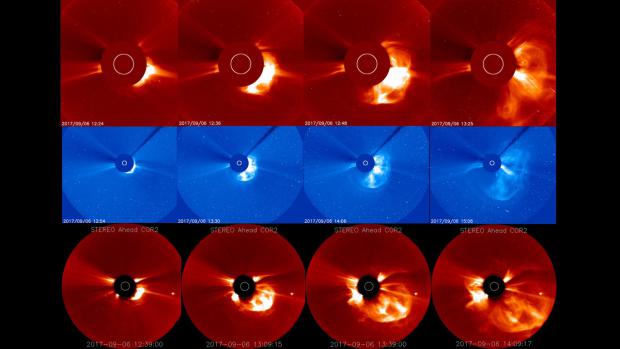
Coronal Mass Ejections (CMEs) are large expulsions of plasma and magnetic field from the Sun’s corona. They can eject billions of tons of coronal material and carry an embedded magnetic field (frozen in flux) that is stronger than the background solar wind interplanetary magnetic field (IMF) strength. CMEs travel outward from the Sun at speeds ranging from slower than 250 kilometers per second (km/s) to as fast as near 3000 km/s. The fastest Earth-directed CMEs can reach our planet in as little as 15-18 hours. Slower CMEs can take several days to arrive. They expand in size as they propagate away from the Sun and larger CMEs can reach a size comprising nearly a quarter of the space between Earth and the Sun by the time it reaches our planet.
The more explosive CMEs generally begin when highly twisted magnetic field structures (flux ropes) contained in the Sun’s lower corona become too stressed and realign into a less tense configuration – a process called magnetic reconnection. This can result in the sudden release of electromagnetic energy in the form of a solar flare; which typically accompanies the explosive acceleration of plasma away from the Sun – the CME. These types of CMEs usually take place from areas of the Sun with localized fields of strong and stressed magnetic flux; such as active regions associated with sunspot groups. CMEs can also occur from locations where relatively cool and denser plasma is trapped and suspended by magnetic flux extending up to the inner corona - filaments and prominences. When these flux ropes reconfigure, the denser filament or prominence can collapse back to the solar surface and be quietly reabsorbed, or a CME may result. CMEs travelling faster than the background solar wind speed can generate a shock wave. These shock waves can accelerate charged particles ahead of them – causing increased radiation storm potential or intensity.
Important CME parameters used in analysis are size, speed, and direction. These properties are inferred from orbital satellites’ coronagraph imagery by SWPC forecasters to determine any Earth-impact likelihood. The NASA Solar and Heliospheric Observatory (SOHO) carries a coronagraph – known as the Large Angle and Spectrometric Coronagraph (LASCO). This instrument has two ranges for optical imaging of the Sun’s corona: C2 (covers distance range of 1.5 to 6 solar radii) and C3 (range of 3 to 32 solar radii). The LASCO instrument is currently the primary means used by forecasters to analyze and categorize CMEs; however another coronagraph is on the NASA STEREO-A spacecraft as an additional source.
Imminent CME arrival is first observed by the Deep Space Climate Observatory (DSCOVR) satellite, located at the L1 orbital area. Sudden increases in density, total interplanetary magnetic field (IMF) strength, and solar wind speed at the DSCOVR spacecraft indicate arrival of the CME-associated interplanetary shock ahead of the magnetic cloud. This can often provide 15 to 60 minutes advanced warning of shock arrival at Earth – and any possible sudden impulse or sudden storm commencement; as registered by Earth-based magnetometers.
Important aspects of an arriving CME and its likelihood for causing more intense geomagnetic storming include the strength and direction of the IMF beginning with shock arrival, followed by arrival and passage of the plasma cloud and frozen-in-flux magnetic field. More intense levels of geomagnetic storming are favored when the CME enhanced IMF becomes more pronounced and prolonged in a south-directed orientation. Some CMEs show predominantly one direction of the magnetic field during its passage, while most exhibit changing field directions as the CME passes over Earth. Generally, CMEs that impact Earth’s magnetosphere will at some point have an IMF orientation that favors generation of geomagnetic storming. Geomagnetic storms are classified using a five-level NOAA Space Weather Scale. SWPC forecasters discuss analysis and geomagnetic storm potential of CMEs in the forecast discussion and predict levels of geomagnetic storming in the 3-day forecast.
*Images courtesy of NASA and the SOHO and STEREO missions
MORE SECTIONS
- Dear Deidre
MORE FROM THE SUN
- Newsletters

- News Travel
World famous attraction forced to close to tourists AGAIN due to volcanic eruption
- Hope Brotherton , Travel Reporter
- Published : 9:56, 30 May 2024
- Updated : 13:24, 30 May 2024
- Published : Invalid Date,
A POPULAR tourist attraction in Iceland has been forced to close following a volcanic eruption - the second time this year.
The Blue Lagoon Resort in Reykjavík has been forced to shut its doors after a volcano in southwestern Iceland erupted yesterday.

The Blue Lagoon is a geothermal spa and bathing spot on Iceland’s Reykjanes peninsula that welcomes more than 700,000 visitors each year.
However, the spa is currently closed to guests after a state of emergency was declared following a volcanic eruption in Iceland — the fifth time it has happened in three months.
According to the Icelandic broadcaster RUV, the Blue Lagoon was evacuated before the eruption began on Wednesday afternoon.
A statement on the Blue Lagoon website reads: "Due to a volcanic eruption that commenced in Sundhnúksgígar on May 29, we took the precautionary measure of evacuating and temporarily closing all our operational units.
"We have made the decision to extend the closure until May 31, at which time the situation will be reassessed.
"All guests with bookings during this temporary closure will be contacted. Guests wishing to modify or cancel their bookings are kindly directed to use My Booking."
On Wednesday, red streams of lava were pictured spewing from the volcano following a series of earthquakes north of Grindavik.
A new volcanic fissure (a surface crack where lava can be seen erupting) opened up near Sundhnuksgigar on the Reykjanes peninsula earlier this week.
Most read in News Travel

RTE star Claire Byrne hits back at 'major controversy' with fab home glimpse

Major social welfare cut warning for thousands in huge payment shake-up

Roy Keane delivers cracking one-liner while testifying in alleged headbutt trial

Irishman dies on holiday in Spain after being pulled from water unconscious
The Icelandic Meteorological Office (IMO) said the new fissure stretched for 1.5miles and was continuing to grow.
The coastal town of Grindavik , which is home to around 3,800 people, was also evacuated on Wednesday.

In a bid to prevent any further damage, barriers have been erected to steer lava away from key points of infrastructure in the area, including the Svartsengi geothermal power plant and the geothermal spa.
Grindavik Mayor Fannar Jónasson told national broadcaster RUV: "It’s a much larger volume that’s on the move right now headed for town. The lava has already conquered [a lot]."
Air travel to and from Iceland hasn't been impacted by the latest eruption, with Keflavik International Airport operating as normal.
This isn't the first time Iceland has been forced to close its tourist attractions because of volcanic activity, with this week's eruption marking the fifth since December.
Residents in the Reykjanes peninsula were also forced to evacuate their homes in March when fountains of molten rock burst from fissures in the ground.
The lava has already conquered [a lot]
The March eruption marked the fourth "alarming" eruption in just three months, with others taking place in December 2023, January 2024 and February 2024.
Back in November 2023, the Blue Lagoon was also forced to close after 1,400 earthquakes hit the area in the space of 24 hours.
The earthquakes prompted safety fear prompted fears of a volcanic eruption, with the tourist attraction closing its doors as a result.
The Fagradalsfjall volcano also erupted last year- although Keflavik Airport remained open during this period.
Meanwhile, in 2010, the country's Eyjafjallajokull volcano erupted , spewing huge clouds of ash into the atmosphere.
More than 100,000 flights were grounded , stranding millions of international travellers.
Air travel was halted for days because of concerns that the ash could damage jet engines.
The ash clouds led to widespread airport closures across Europe.
Iceland's proposed tourism tax
The European hotspot could soon start charging holidaymakers who stay overnight in the country.
In an interview with Bloomberg , Katrín Jakobsdóttir, the Prime Minister of Iceland, said: "Tourism has really grown exponentially in Iceland in the last decade and that obviously is not just creating effects on the climate.
"Most of our guests who are coming to us are visiting the unspoilt nature , and obviously it creates a pressure."
Read more on the Irish Sun

RTE 'biggest crisis' alert after double departure amid fears more stars to quit

Rory McIlroy & stunning TV reporter spark romance rumours with flirty interview
Is it safe to travel to iceland in 2024.
Following the fifth eruption in recent months, here's everything you need to know about travelling to Iceland this year.
Iceland’s Meteorological Office has said there is a "considerably high" risk of the volcano erupting again.
The UK Foreign Office also warns: "Volcanic eruptions and earthquakes are common in Iceland.
"Recently there has been a series of volcanic eruptions on the Reykjanes Peninsula in south-west Iceland, the latest on 29 May.
"These have affected the town of Grindavik and the area to the north of it. Stay away from this area. All roads to Grindavik and the surrounding area are closed.
"The likelihood of further eruptions in this location remains high. Check local media for updates and follow the Iceland authorities’ advice on travel to the area."
If implemented, the tax will be used to tackle the impact of tourism on the country's climate.
The scheme may look something like a city tax where overnight guests are charged for their stay - but details are yet to be announced.

- Travel advice
MORE SECTIONS
- Dear Deidre
MORE FROM THE SUN
- Newsletters
- Deliver my newspaper
- Sun Vouchers
- The Sun Digital Newspaper
- Racing Members Enclosure

- News Travel
Major UK airport SCRAPS hated hand luggage rule just in time for summer holidays
- Ethan Singh , News Reporter
- Published : 18:17, 29 May 2024
- Updated : 1:06, 30 May 2024
- Published : Invalid Date,
A MAJOR airport has scrapped a hated hand luggage rule just in time for the summer holidays.
Brits jetting abroad via Birmingham Airport this summer will be pleased to know that getting through security will become much easier.

The airport is understood to be on track to complete its £60 million "state-of-the-art" security hall upgrade by its June deadline , which will transform how passengers queue, transit to airside and carry liquids.
However, ahead of the June 1 deadline, the airport appears to have rolled out some of these changes early.
They key one being that customers no longer need to remove their liquids, which should be under 100ml, from out of their hand luggage.
In fact, liquids can remain in hand luggage loose, but the airport has warned that for now, liquids still cannot exceed 100ml.
Read More in Travel

Summer holidays at Disneyland Paris cost from £399pp with park entry & freebies

Country near WW3 hotspot set to become Brit hol resort in £8bn project
The current 100ml liquid regulations were initially brought in as a temporary measure back in 2006, but have remained in place ever since.
Currently, holidaymakers have to remove all liquids and electrics from their bags and place them in clear plastic bags on separate trays.
But the new security checkpoints feature a specific type of X-ray scanner, which allows passengers to leave their liquids and electronics in their hand luggage.
With more than 200,000 customers flying out through BHX this half-term, the change will have a significant impact on how customers transit through to the airside.
Most read in News Travel

Half-term hell as airport workers to launch 3-day strike - see exact dates

Tiny train station that's one of the oldest in the UK to launch brand new routes

Unknown attraction people can't believe is in UK that's like visiting Thailand

UK's largest outdoor swimming pool reopens following £4million renovation
However until the new system goes live, it is important to remember that passengers will need to continue adhering to the 100ml hand luggage limit.
Once the new security hall is operating fully by June, the 100ml liquid rule will also be scrapped.
The new limit will be two litres, once the technology is fully up and running in time for the summer holidays.
The scanners also mean travellers will no longer need to remove liquids and laptops from their bags when passing through airport security.
This will make the process of getting to departure gates much quicker and less stressful.
Luton and Bristol airports are also aiming to introduce the new technology by June, with the latter said to be investing more than £10million in the new security equipment.
Teesside Airport is one of two, alongside London City Airport, to have already installed them.
However, it will be some time before the new 3D scanning systems are in place at all UK airports, with most of the major ones set to miss the deadline put in place by the government.
Despite all airports initially being given a deadline of June 2024 by the Department for Transport (DfT) several major airports have fallen behind.
The likes of London Heathrow, Gatwick, Stansted and Manchester have all been given an extension until summer 2025 to make sure they have fully installed the new scanners.
Work has begun on implementing the new technology, but they haven't been able to complete a full transfer from the old scanners.
Hand luggage rules for UK airlines
We've rounded up how much hand luggage you can take on UK airlines when booking their most basic fare.
One personal bag measuring no more than 40cm x 20cm x 25cm
One personal bag measuring no larger than 45cm x 36cm x 20cm
One personal item that fits underneath the seat in front and one cabin bag no larger than 56cm x 45cm x 25cm weighing up to 10kg
One personal item that its underneath the seat in front and one cabin bag no larger than 55cm x 40cm x 20cm weighing up to 10kg
British Airways
One personal bag no larger than 40cm x 30cm x 15cm and one cabin bag no larger than 56cm x 45cm 25cm weighing up to 23kg
Virgin Atlantic
One personal item that fits underneath the seat in front and one cabin bag no larger than 56cm x 36cm x 23cm weighing up to 10kg
Gatwick expects to have the remaining scanners in place by the first three months of 2025, which is said to be a similar time frame to both Stansted and Manchester.
Structural problems, and keeping security operations up and running while installing the new machines, have been the source of most of the delays.
The rules requiring liquids to be taken through security in 100ml or under and in a clear plastic bag were introduced in 2006 after a plot to bomb a transatlantic flight was scuppered.
READ MORE SUN STORIES

Mum left permanently disfigured by dentist who 'filled her mouth with bleach'

I’m a multi-millionaire but won't spend more than £800 a month
Meanwhile, these two items commonly cause problems for passengers at airport security.
And this airport security guard has revealed the mistakes that hold people up on the way to their departure gates.
- Holiday tips tricks and hacks
- Travel advice
Skip to Content
Solar physicists unlock the key to how sunspots form—and much more

Images of the sun over 10 years reveal how the star's activity spikes and dips over time. (Credit: The Yohkoh mission of ISAS, Japan, and NASA, United States)
- Share via Twitter
- Share via Facebook
- Share via LinkedIn
- Share via E-mail
A team of solar scientists have uncovered the possible originals of the engine that drives much of the sun’s volatile nature—generating the sunspots that move like storm clouds over the surface and causing the sun’s activity levels to rise and fall over 11-year cycles.
The secret behind this engine, also known as the “solar dynamo,” may be among the oldest “unsolved problems of physics,” said Benjamin Brown, a solar physicist at CU Boulder.
In new research, he and his colleagues used mathematical equations to simulate the behavior of the sun, arguing that the dynamo may begin in the star’s outermost layers—not deep in its interior as many scientists have believed for decades.
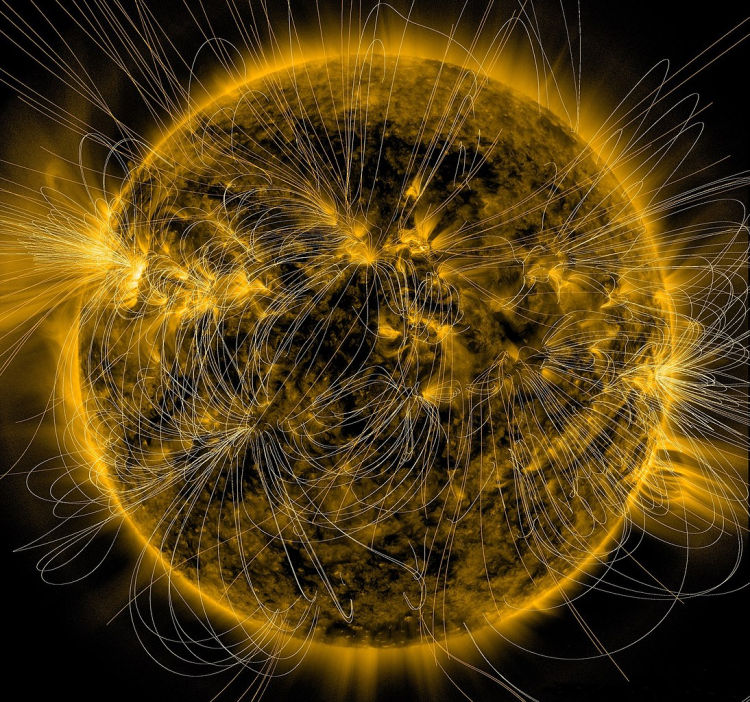
Click to enlarge Visualization of magnetic fields lines emerging from the sun's surface. Sunspots sit at the base of these loops. (Credit: NASA/SDO/AIA/LMSAL)

Click to enlarge Drawing of a sunspot by John of Worcester in 1128 A.D. (Credit: Public domain image via Wikimedia Commons )
It’s a pursuit that, in many ways, started with the famed astronomer Galileo Galilei in 1612 A.D.
“Galileo first observed the sunspots 400 years ago, and he learned quite a bit about them, including how they move over the sun’s surface,” said Brown, a co-author of the research and associate professor in the Department of Astrophysical and Planetary Sciences . “But he couldn’t figure out where they came from. We’ve struggled with the question ever since.”
The researchers, led by Geoffrey Vasil of the University of Edinburgh in the United Kingdom, published their findings May 22 in the journal Nature. Co-authors of the study included Keith Julien, an applied mathematician from CU Boulder who died in April after a short illness.
The findings hinge on the dynamo, the term for the complex physics and chemistry in the sun that produce its wild magnetic fields. Earth boasts its own dynamo that powers the planet’s magnetic field—the reason why all compasses on the ground point north.
The sun’s inner workings matter a lot for people, Brown said. The sun’s dynamo generates solar storms that, among other things, pose risks to human power grids. Such storms also caused the auroras that appeared in the skies above the United States earlier this month.
For the researchers, the study represents an achievement decades in the making.
“Geoff Vasil and I have been thinking about these ideas ever since we were both grad students at CU Boulder 20 years ago,” Brown said.
Wild yet orderly
In general, scientists agree that the solar dynamo begins in the sun’s “convection zone,” or roughly the outer one-third of its interior. There, plumes of hot and charged particles, known as plasma, climb toward the surface.
While Earth’s magnetic field is mostly uniform, the churn of plasma throughout the sun’s convection zone warps and twists its magnetic field lines into a pattern that looks a like a bowl of noodles.
Despite that chaos, the solar dynamo powers behavior that is surprisingly predictable, Brown said. Every 11 years or so, the sun moves from a period of low activity, when sunspots pop up less often, to a period of frenzied activity, when sunspots abound—then it flips and starts all over again. Right now, the sun’s activity is on the frenzied side.
“You could practically set a calendar to the solar dynamo,” he said. “How is it so wild yet also so orderly?”
Spinning dancers
To find out, researchers first need to know exactly where in the sun the dynamo begins. In the 1990s, scientists proposed that the dynamo emerged roughly 130,000 miles below the sun’s surface—a theory nicknamed the “dynamo in the deep.”
That notion, however, struggles to explain the order that emerges from the sun’s chaos. Instead, Vasil, Brown and their colleagues turned to a phenomenon in physics called a “magnetorotational instability.” It’s a sort of imbalance that forms whenever magnetic fields interact with rotating plasmas where those flows move faster as you go deeper.
“It’s kind of like dance partners slinging each other around in a spin while holding arms,” Brown said.

Keith Julien
Researchers have long examined how this phenomenon arises in the disks of hot gases that circle black holes. Its role in the sun is less clear.
In the current study, Vasil, Brown and their colleagues ran a series of calculations on computers to study how such an instability could influence the sun’s activity. They discovered that the process could easily whip up the sun’s insides to form the solar dynamo and explain how the 11-year cycles start. Those physics would also take place in the outer 10% of the sun, or a paltry 20,000 miles from the surface. The solar dynamo, in other words, might be powerful, but it’s also a little on the shallow side.
The researchers have a lot of work to do before they can fully cast off the dynamo in the deep theory. But Brown is hopeful that the study could become its own dynamo—generating a wave of new research in the field.
Vasil added that the work is a testament to his colleague and friend, Julien.
As a doctoral student at CU Boulder, “My advisors and mentors were Nic Brummell, Juri Toomre and Keith Julien,” Vasil said. “I recall first having a ‘huh, that's funny’ moment about sun's the near-surface instability one morning in 2004 while flipping through an astrophysics textbook. Keith was the first person I literally ran to tell about it. He was such a fantastic friend all these years. He supported ideas and gave encouragement to a generation of energetic young researchers, like I was back then. It's astonishing he won't be here anymore. But he was thrilled this work happened and was to be published in Nature. The silver lining is that his ideas and personality will live on in the astonishing number of people that he inspired over the years.”
News Headlines
Related articles.

LASP designated a center of excellence for CubeSat technologies
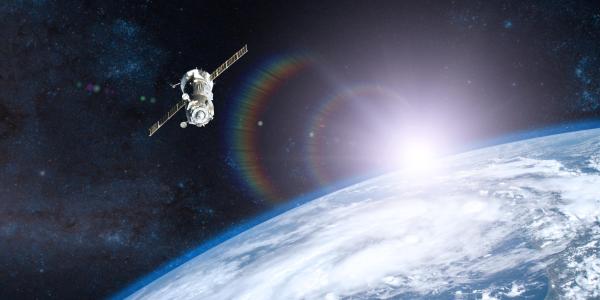
Tracking Earth ice sheet melt from space
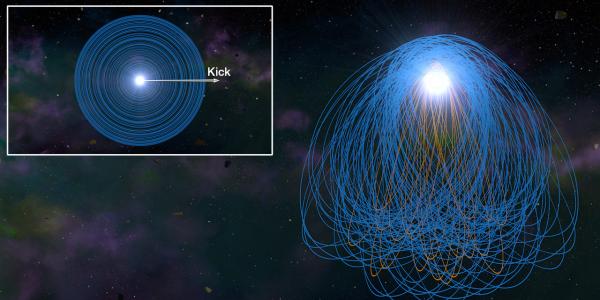
Hungry, hungry white dwarfs: Solving the puzzle of stellar metal pollution
- Arts & Humanities
- Business & Entrepreneurship
- Climate & Environment
- Education & Outreach
- Health & Society
- Law & Politics
- Science & Technology
Campus Community
- Administration
- Announcements & Deadlines
- Career Development
- Getting Involved
- Mind & Body
Events & Exhibits
- Arts & Culture
- Conferences
- Lectures & Presentations
- Performances & Concerts
- Sports & Recreation
- Workshops & Seminars
Subscribe to CUBT
Sign up for Alerts
Administrative eMemos
Buff Bulletin Board
Events Calendar

From medieval influences to harnessing sun’s energy, Bloom 2024 winners show the future of gardening is bright
A s green-fingered enthusiasts streamed across from Heuston Station and poured into shuttle buses on Parkgate Avenue, three queues at a time, the topic of weather was on the lips of everyone on the way to Bloom.
“Jaysus, look at the size of it,” one gentleman mused on the way through Phoenix Park.
The sheer size of Bloom would evoke the same thought.
Now in its 18th year, people flock in their tens of thousands for a long weekend of gardening, good food and entertainment. Well-known faces – from Donal Skehan to Marty Morrissey – couldn’t move without fans looking for a photo.
One of the standout gardens this year is the gold medal-winning concept garden “In Perspective”, the work of the European Commission and experienced Bloom designers, married couple Oliver and Liat Schurmann.
A towering wooden structure with open spaces, standing in the garden is at once a charming outdoor experience and evocative of the protection offered by an indoor space.
According to Mr Schurmann, now on his 12th Bloom design alongside his wife, that feeling of openness in an enclosed space comes by design.
“It’s that feeling of how small societies were in medieval times,” he said. “They were enclosed, protected, often enclosing a courtyard area. It’s that kind of atmosphere, which is special. You’ve got the large, outside world around you and this enclosed area.”
Described as a design looking to the past and to the future, it aims to highlight the importance of modern society reconnecting with nature.
The wooden structure surrounds a central water fixture with the plants seamlessly intertwined with the wood.
“It makes us feel really comfortable and smaller than nature, not greater than nature, but being really small and enjoying nature all around us.”
Among the silver medallists was Cork-based German designer Hendrik Lepel, creator of the “Sun Harness Garden”. Having worked on other projects at Bloom in the past, this was the first Bloom show garden of his own design.
“Come into my office,” he said as he opened the gate to the garden, beckoning festival-goers to take a look at what looked at first like half a greenhouse.
Then came the magic. Mr Lepel rotated the garden’s semi-circular glass pavilion, turning a sheltered, open-air sitting area into a fully enclosed space.
He said the glass fixture is all about harnessing the power of the sun’s energy and showing how “microclimates” can be created in small spaces.
“You don’t actually need the sun. All morning we had the sun out so it gets trapped in the tiles, so it’s like a power battery,” he said.
“So now that heat below your feet starts radiating. Within 10 minutes we get a different climate in here and when you go out, you will feel the difference.”
As Mr Lepel puts it, to sit inside the pavilion and feel the microclimate inside is to understand how the entire garden, plants and all, can benefit.
“Another microclimate element of the garden, you have a dry-stone wall placed towards the south so during the day when the sun is out, the sun’s energy gets stored within the wall and during the night you have a slow release, which is then beneficial for the plants,” he added.
“On the north side, you have the taller trees so the sun hits it. On the west and east flanks, it slowly slows down.”
The Sun Harness is a perfect invention for Ireland’s changeable weather. “Since Covid people use their garden more. They want to grow more, look into how to extend the season and get into glasshouses,” Mr Lepel said.
“Then they want to sit in the glasshouse as well, but then come the limitations. A glasshouse gets too hot. That’s where this comes in, you open it right up and you have instant ventilation.”
Mr Lepel stood up again and showed how quickly the garden can change again. One moment we were standing in an indoor space. The next, we were again in the open-air enclosure.
“You can have friends sitting outside, have a chat and stay sitting in here. If you think about it, the garden, after your kitchen, is the most important room. That’s where you get your calmness, do your exercise,” he said.
Sure enough, once we stepped outside, that difference between the heat from the tiling and the cold of the outdoors was palpable.
Get ahead of the day with the morning headlines at 7.30am and Fionnán Sheahan's exclusive take on the day's news every afternoon, with our free daily newsletter.

IMAGES
VIDEO
COMMENTS
When calculating travel time you use two basic measurements: the distance and the speed of the vehicle. The average distance from Earth to the Sun — called an astronomical unit or AU— is 92,955,807 miles (149,597,870 kilometers). However, just as it is here on Earth, travel time highly depends on the route you take and a variety of other ...
Our Earth is moving away from the Sun at around 15 cm every year. However, Earth will never escape from the Solar System, since the Sun will evolve in 5 billion years into a red giant star. When this happens, Earth will be with 750,000 km / 466,028 mi farther away from the Sun; however, the Sun will also expand its radius for more than 256 ...
How long would it take to get to the Sun? - BBC Sky at Night Magazine.
For theoretical calculations, if one could travel at the speed of light: Speed of Light: 299,792 km/s. Time to the Sun at Light Speed: roughly 8 minutes and 20 seconds. However, even the fastest current spacecraft travel considerably slower than light speed, turning minutes into days, months, or more.
The answer lies in the same fact that keeps Earth from plunging into the Sun: Our planet is traveling very fast — about 67,000 miles per hour — almost entirely sideways relative to the Sun. The only way to get to the Sun is to cancel that sideways motion. Since Parker Solar Probe will skim through the Sun's atmosphere, it only needs to ...
This extra day takes Earth's calendar year to 366 days with the extra day being attached to the end of February. To be completely accurate then Earth's orbital period is 365.2422 days long. This is the exact amount of time it takes our planet to complete its journey around the Sun.
The Sun doesn't behave the same way all the time. It goes through phases of high and low activity, which make up the solar cycle. Approximately every 11 years, the Sun's geographic poles change their magnetic polarity - that is, the north and south magnetic poles swap.
We wouldn't know the Sun had vanished for about eight minutes (the Earth is, on average, about 93 million miles away) due to the time it takes for light (and gravitational waves) to travel from ...
Astronomical units, abbreviated AU, are a useful unit of measure within our solar system. One AU is the distance from the Sun to Earth's orbit, which is about 93 million miles (150 million kilometers). When measured in astronomical units, the 886,000,000-mile (1,400,000,000-kilometer) distance from the Sun to Saturn's orbit, is a much more ...
About 4 million miles (6.4 million kilometers) is quite a distance. It's the equivalent of driving around Earth's widest point, the equator, 160 times in a row. Well that's about as close to the sun that NASA has gotten the Parker Solar Probe, so far anyway.The spacecraft, which launched Aug. 12, 2018, has set several major milestones since then, including becoming the first craft ever in ...
The distance of The Sun from Earth is currently 151,662,795 kilometers, equivalent to 1.013803 Astronomical Units . Light takes 8 minutes and 25.8926 seconds to travel from The Sun and arrive to us. Distance Kilometers 151,662,795. Distance AU 1.013803. Light Travel Time 8 minutes and 25.8926 seconds.
The Parker Solar Probe ( PSP; previously Solar Probe, Solar Probe Plus or Solar Probe+) [6] is a NASA space probe launched in 2018 with the mission of making observations of the outer corona of the Sun. It will approach to within 9.86 solar radii (6.9 million km or 4.3 million miles) [7] [8] from the center of the Sun, and by 2025 will travel ...
How far is Earth from the Sun? At its closest (perihelion), the Sun is around 91.4 million miles (147.1 million km) away from the Earth.This occurs annually between 3 - 6th of July, a few weeks after the summer solstice. At its farthest (aphelion), the Sun is around 94.5 million miles (152.1 million km) away from the Earth.This happens in the northern winter, between the 2 - 4th of January ...
The short answer is that it takes sunlight an average of 8 minutes and 20 seconds to travel from the Sun to the Earth. If the Sun suddenly disappeared from the Universe (not that this could ...
First of all, the speed of the Earth's orbit around the Sun is 108,000 km/h, which means that our planet travels 940 million km during a single orbit. The Earth completes one orbit every 365. ...
Earth at seasonal points in its orbit (not to scale) Earth orbit (yellow) compared to a circle (gray) Earth orbits the Sun at an average distance of 149.60 million km (8.317 light minutes, 92.96 million mi) in a counterclockwise direction as viewed from above the Northern Hemisphere.One complete orbit takes 365.256 days (1 sidereal year), during which time Earth has traveled 940 million km ...
Since there are 24 hours in a day, divide 930,000 by 24 hours to get the number of days. And then, there are 365 days in a year, so divide the number of days by 365 to get the number of years ...
We orbit the Sun at a distance of about 150 million km. Light moves at 300,000 kilometers/second. Divide these and you get 500 seconds, or 8 minutes and 20 seconds. This is an average number ...
In contrast, 1 AU is about 8.3 light-minutes, meaning it takes light about 8.3 minutes to travel from the sun to Earth. ... which posits that space-time is relative to the observer's location.
Answer: Time = 4,500,000,000 km / 28,000 km/h = 160714 hours or 6696 days or 18.3 years. Problem 3 - The fastest unmanned spacecraft, Helios-2, traveled at a speed of 253,000 km/hr. In the table below, use proportional math to fill in the travel times from the sun to each planet traveling at the speed of Helios-2.
The Sun doesn't behave the same way all the time. It goes through phases of high and low activity, which make up the solar cycle. Approximately every 11 years, the Sun's geographic poles change their magnetic polarity - that is, the north and south magnetic poles swap. During this cycle, the Sun's photosphere, chromosphere, and corona ...
A: The speed of light is approximately 1,079,000,000 kilometers/hour (670,600,000 miles/hour). On average, the Sun is 150 million kilometers (93 million miles) away from Earth. This means that it takes a photon of light about 8 minutes and 20 seconds to travel from the Sun to Earth. Posted on December 5, 2016 at 8:49 am. Categories: Gravity & Air.
CMEs travel outward from the Sun at speeds ranging from slower than 250 kilometers per second (km/s) to as fast as near 3000 km/s. The fastest Earth-directed CMEs can reach our planet in as little as 15-18 hours. ... away from the Sun and larger CMEs can reach a size comprising nearly a quarter of the space between Earth and the Sun by the time ...
Published: Invalid Date, A POPULAR tourist attraction in Iceland has been forced to close following a volcanic eruption - the second time this year. The Blue Lagoon Resort in Reykjavík has been ...
Published: Invalid Date, A MAJOR airport has scrapped a hated hand luggage rule just in time for the summer holidays. Brits jetting abroad via Birmingham Airport this summer will be pleased to ...
The sun's inner workings matter a lot for people, Brown said. The sun's dynamo generates solar storms that, among other things, pose risks to human power grids. Such storms also caused the auroras that appeared in the skies above the United States earlier this month. For the researchers, the study represents an achievement decades in the ...
Sun & Moon. Travel. Climate. Now Playing. Tornado Leaves Arkansas Town 'Unrecognizable' 00:45. Next Up. Severe Storms, Flooding Take Aim At Plains And South 00:31.
The Sun Harness is a perfect invention for Ireland's changeable weather. "Since Covid people use their garden more. They want to grow more, look into how to extend the season and get into ...
Scientists aren't just looking to create a new "time zone" on the moon, as some headlines have suggested, said Cheryl Gramling, the lunar position, navigation, and timing and standards lead ...
Lightweight and breathable, it will keep him cool and dry. And, with UPF 50+ protection, it will protect him from the sun - even when he's in the water. Available in six colors, it's ...